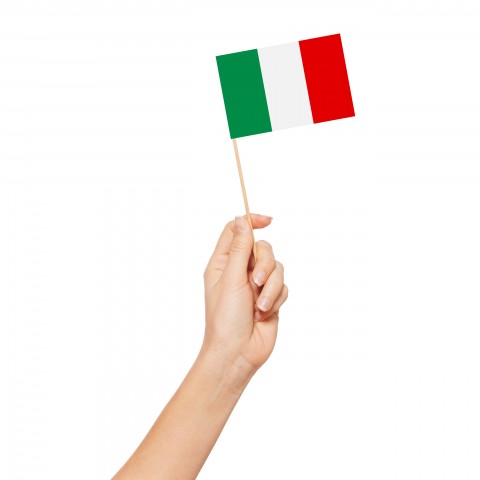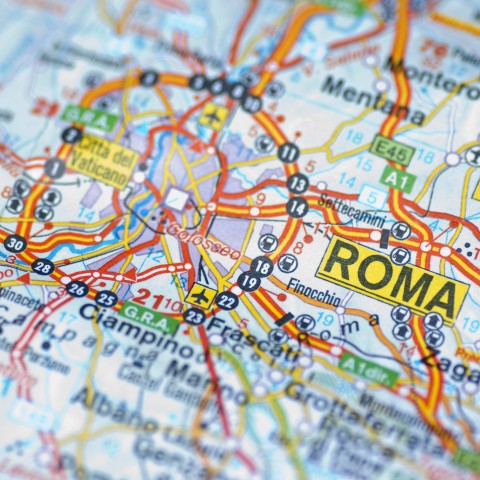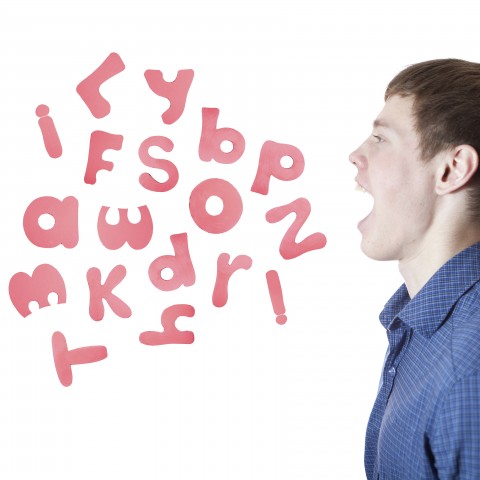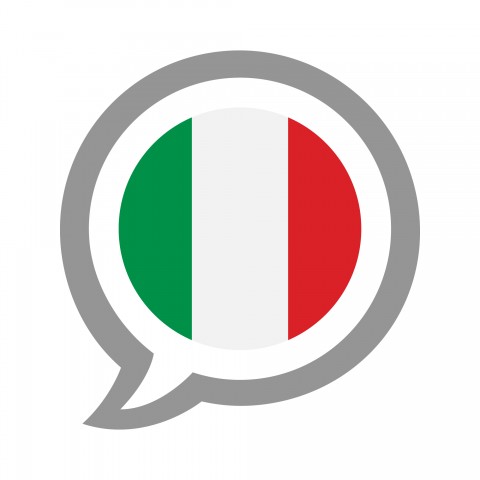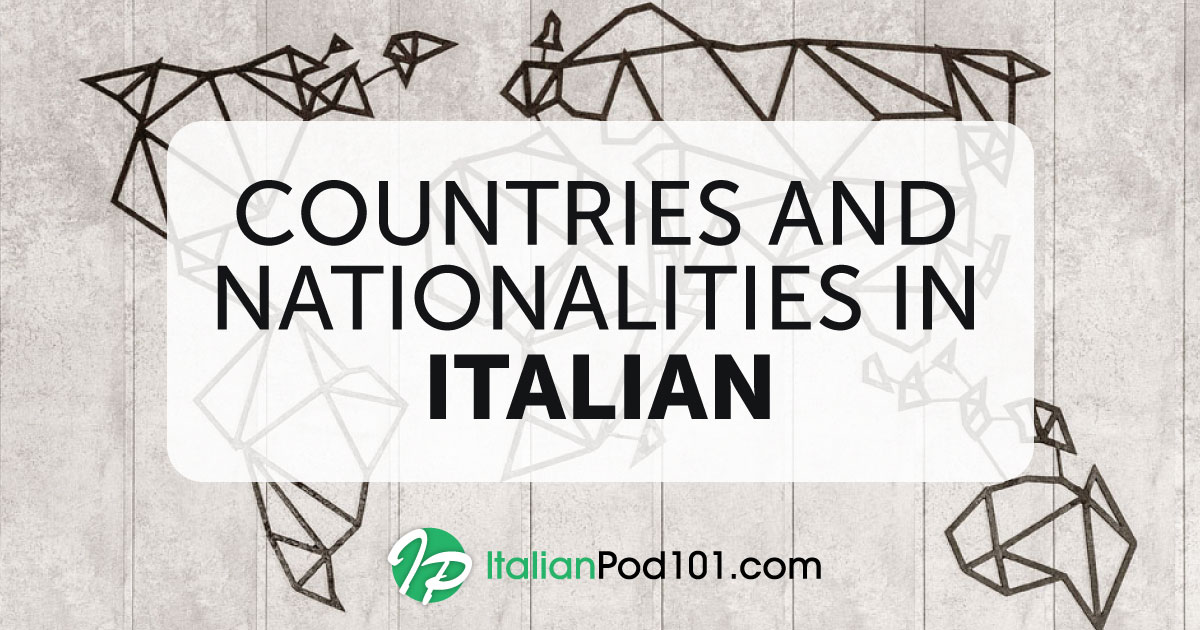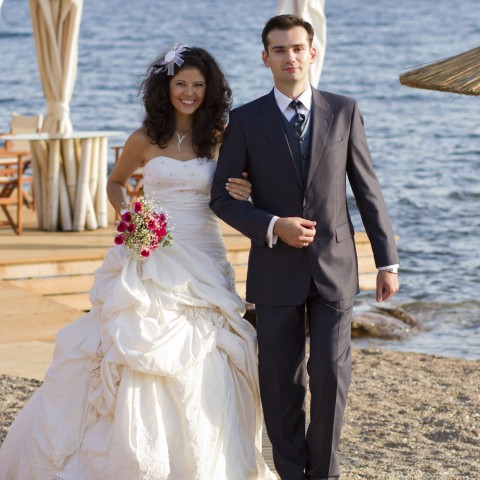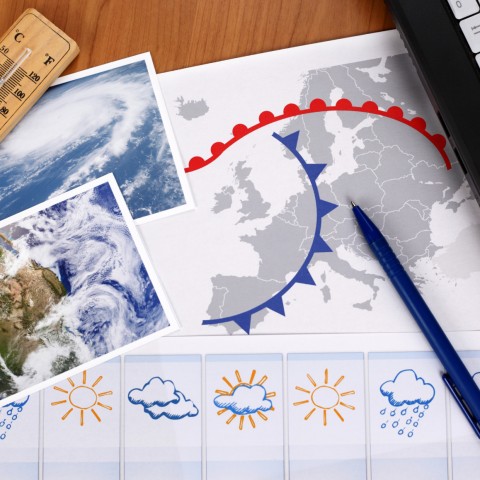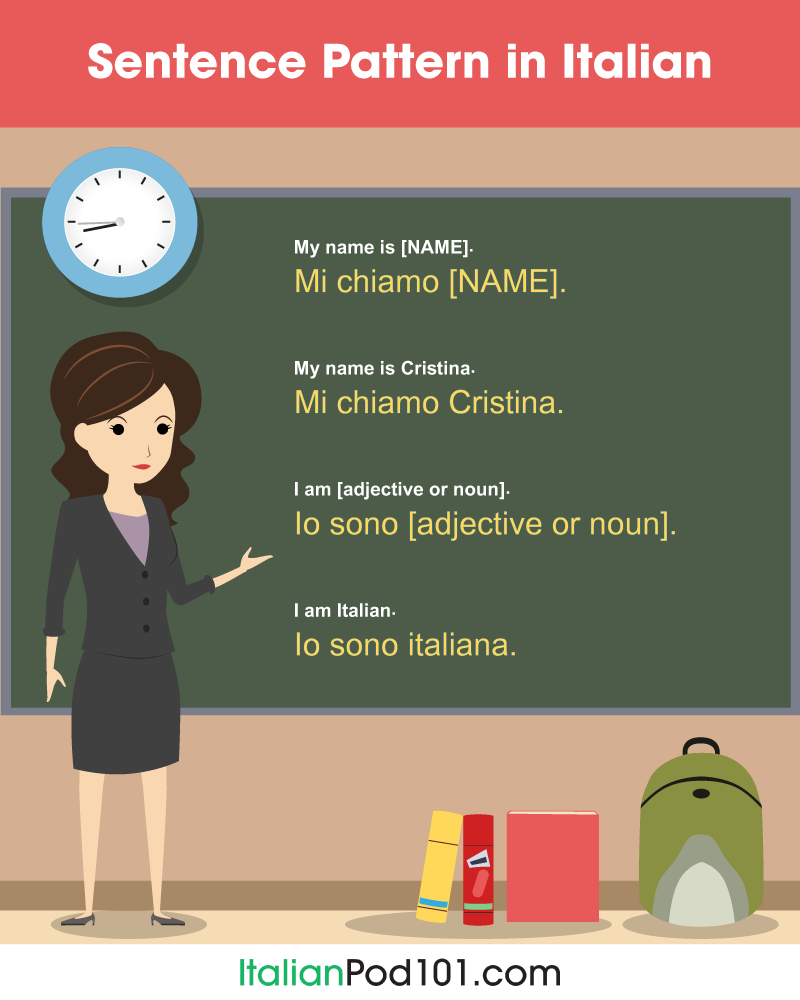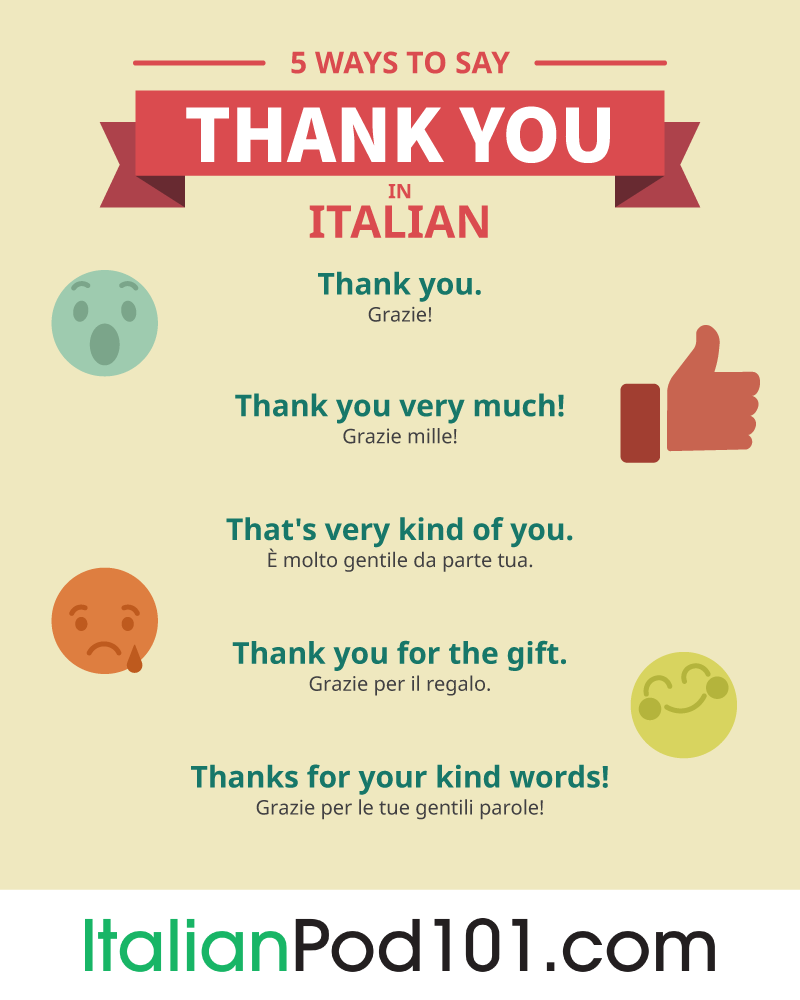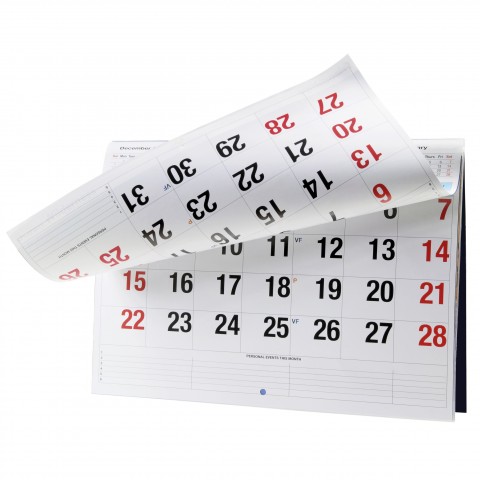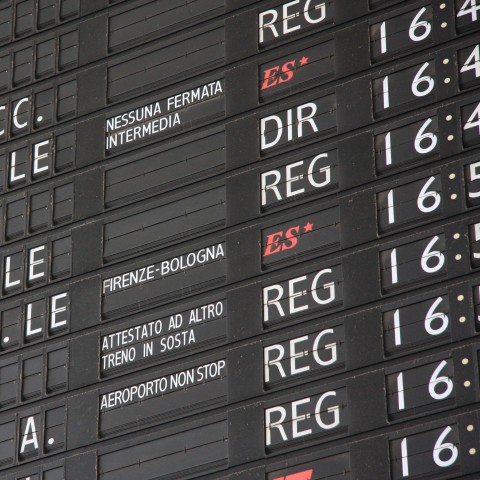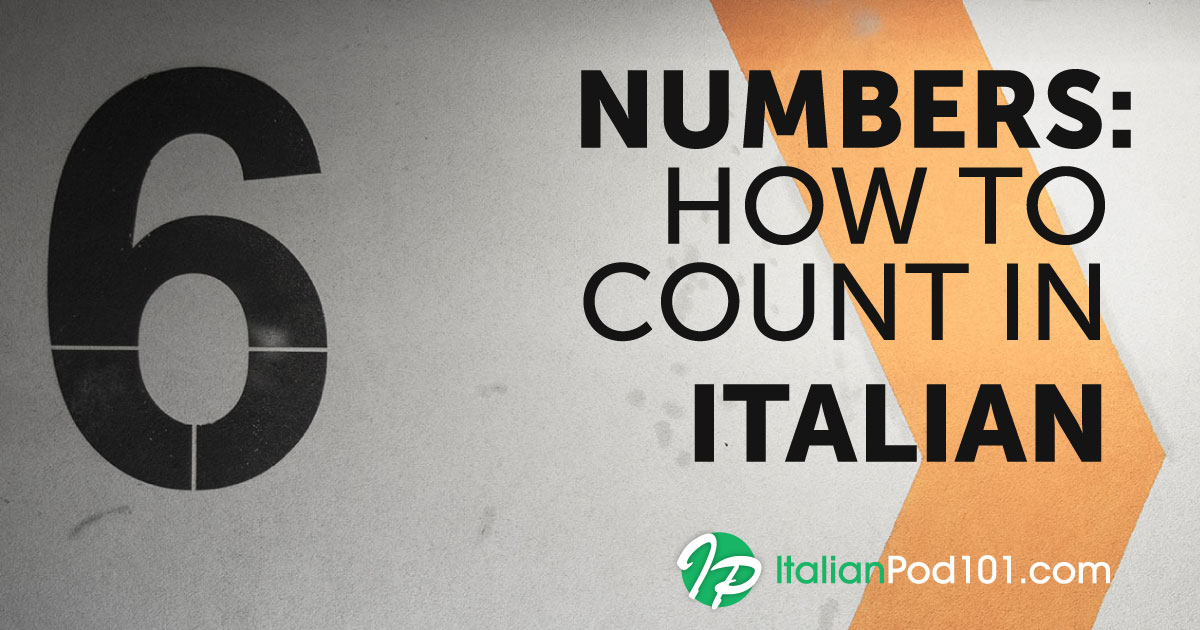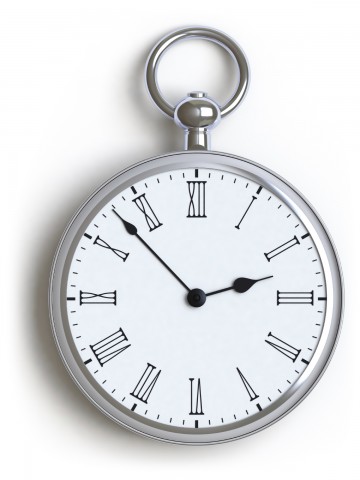Italian prepositions are like almost everything else in the Italian language: hard to understand at the beginning, but poetic and lovely to the ear. Well, with this comprehensive guide to prepositions in Italian by ItalianPod101, you’ll learn Italian prepositions in the blink of an eye.
We’ll cover the basics of Italian prepositions and when to use them, using charts and examples so that understanding Italian prepositions has never been clearer. It’s Italian prepositions made easy!

Table of Contents
- What is a Preposition?
- How to Use Italian Prepositions
- Main Italian Prepositions
- Main Prepositions + Article
- Learn Italian with Ease at ItalianPod101
1. What is a Preposition?
But first, we must start with the basics: the very definition of a preposition.
A preposition is a small word that connects two words or sentences that have a specific relationship to each other.
For example: The cat is in the box. The preposition here doesn’t connect them in a one+one relation—that’s a conjunction (e.g. Angela and Luke are going to meet some friends).
Instead, a preposition adds some information regarding the relationship between the two elements it connects. For example, it tells you that the cat is in the box, not on the box or beside it.
2. How to Use Italian Prepositions
In Italian, there are basically two different kinds of prepositions:
- Main prepositions (preposizioni proprie in Italian)
- Main prepositions + article
Then there are words that can be used as prepositions but also have other uses (preposizioni improprie in Italian), and prepositions made of more than one word. In this article, we’ll talk about the main prepositions (preposizioni proprie) and their combinations with articles.
Yes, we know, grammar is complicated. But we’ll show you how to use prepositions in Italian with the help of some examples, and everything will become much simpler.
3. Main Italian Prepositions
The main prepositions in Italian are: di, a, da, in, con, su, per, tra, fra. Let’s see each one of them in detail.
1- Di
As far as simple prepositions in Italian go, di is by far the most important and versatile preposition of all. It may have a lot of different functions within a sentence. The most important are:
- Specification
- Aspettiamo l’arrivo di Marta.
“We are waiting for Marta’s arrival.”
- Aspettiamo l’arrivo di Marta.
- Naming
- Stiamo entrando nella città di Roma.
“We are now entering the city of Rome.”
- Stiamo entrando nella città di Roma.
- Fault
- Il colpevole di questo crimine è stato trovato.
“The person who’s guilty of this crime has been found.”
- Il colpevole di questo crimine è stato trovato.
- Penalty
- Ho dovuto pagare una multa di 80 euro.
“I had to pay an eighty-euro fine.”
- Ho dovuto pagare una multa di 80 euro.
- Origin
- Sono di Bologna.
“I’m from Bologna.”
- Sono di Bologna.
- Subject
- Vorrei parlarti di Marco.
“I’d like to talk to you about Marco.”
- Vorrei parlarti di Marco.
- Agent
- I tuoi pantaloni sono macchiati di sugo all’arrabbiata.
“Your trousers are stained with arrabbiata sauce.”
- I tuoi pantaloni sono macchiati di sugo all’arrabbiata.
- Material
- Adoro le case di legno.
“I love wood houses.”
- Adoro le case di legno.
- Abundance
- Lucia è sempre così piena di energia.
“Lucia is always so full of energy.”
- Lucia è sempre così piena di energia.
- Limitation
- Il Marocco è un paese povero di acqua.
“Morocco is a country that’s poor in water.”
- Il Marocco è un paese povero di acqua.
- Cause
- Sto tremando di rabbia.
“I’m shaking with rage.”
- Sto tremando di rabbia.
- Partition
- Questa è la piazza più bella di tutte quelle che abbiamo visto.
“Of all the squares we’ve seen, this is the most beautiful.”
- Questa è la piazza più bella di tutte quelle che abbiamo visto.
- Comparison
- Firenze è più piccola di Milano.
“Florence is smaller than Milan.”
- Firenze è più piccola di Milano.
- Quality
- Cerchiamo persone di talento.
“We are looking for talented people.”
- Cerchiamo persone di talento.
- Weight or measure
- Ho comprato un melone di 3 chili.
“I’ve bought a three-kilo melon.”
- Ho comprato un melone di 3 chili.
- Specific time (when)
- La libreria è chiusa di lunedì mattina.
“The bookstore is closed on Monday mornings.”
- La libreria è chiusa di lunedì mattina.
- Continued time
- Ho fatto un viaggio di un mese negli Stati Uniti.
“I took a one-month trip to the United States.”
- Ho fatto un viaggio di un mese negli Stati Uniti.
It can also connect a sentence with a clause. For example:
- Teresa mi ha chiesto di tornare da lei.
“Teresa has asked me to come back to her.” - Ti ringrazio di essere così gentile con me.
“Thank you for being so kind to me.” - Ti ordino di smettere.
“I order you to stop.”
2- A
Another one of the simple Italian prepositions is a, which becomes ad when used before a word that starts with a vowel. It may be used in a sentence for many purposes:
- Indirect object
- Questa canzone è dedicata a mia moglie.
“This song is dedicated to my wife.”
- Questa canzone è dedicata a mia moglie.
- Being in a place
- Stasera voglio stare a casa.
“Tonight I want to stay at home.”
- Stasera voglio stare a casa.
- Specific time (when)
- Comincerò l’università a settembre.
“I’ll start university in September.”
- Comincerò l’università a settembre.
It can also connect a sentence with a clause when the clause is related to a cause or goal:
- Mi sbagliavo a fidarmi di lui.
“I was wrong to trust him.” - Sono venuto a congratularmi con te.
“I’ve come here to congratulate with you.”
3- Da
Da is another Italian preposition with a lot of different functions. In a sentence, the most important are:
- Going from a place
- Sono partito da Roma questa mattina.
“I left Rome this morning.”
- Sono partito da Roma questa mattina.
- Going to someone
- Per favore, torna da me.
“Please, come back to me.”
- Per favore, torna da me.
- Being at someone’s place
- Stasera vado a dormire da Michela.
“Tonight I’m going to sleep at Michela’s place.”
- Stasera vado a dormire da Michela.
- Agent and cause
- Marco è stato aiutato dai suoi amici.
“Marco has been helped by his friends.”
- Marco è stato aiutato dai suoi amici.
- Separation
- Luca è molto diverso da suo fratello.
“Luca is very different from his brother.”
- Luca è molto diverso da suo fratello.
- Specific time (from when)
- Il corso ricomincerà da lunedì.
“The course will start again on Monday.”
- Il corso ricomincerà da lunedì.
- Continued time (for how long)
- Danila è a casa da due ore.
“Danila has been home for two hours.”
- Danila è a casa da due ore.
- Price
- Il mio capo ha un’auto da 80.000 euro.
“My boss owns a 80.000-euro car.”
- Il mio capo ha un’auto da 80.000 euro.
- Manner
- Si è comportato da stupido.
“He acted stupid.”
- Si è comportato da stupido.
- Purpose
- I tuoi occhiali da sole sono davvero belli.
“Your sunglasses are really nice.”
- I tuoi occhiali da sole sono davvero belli.
It can also connect a sentence to a clause related to a goal or consequence. For example:
- Ho riso tanto da piangere.
“I laughed so much that I cried.” - Mi resta solo un episodio da vedere.
“I just have one episode left to see.”
4- In
This preposition is mostly used for the following functions:
- Being in a place:
- L’ufficio è in via San Felice.
“The office is on San Felice Street.”
- L’ufficio è in via San Felice.
- Period of time:
- Ho speso tutto il mio stipendio in 5 giorni.
“I spent all my salary in five days.”
- Ho speso tutto il mio stipendio in 5 giorni.
5- Con
Con is basically the same as the English preposition “with”:
- Aspetta, vengo con te.
“Wait, I’ll go with you.” - Con questo caldo, bisogna bere molta acqua.
“With this heat, you have to drink a lot of water.”
6- Su
Su is used mainly for:
- Being on something
- Il gatto è salito su un albero.
“The cat has climbed on a tree.”
- Il gatto è salito su un albero.
- Manner
- Prepariamo torte su richiesta.
“We bake cakes upon request.”
- Prepariamo torte su richiesta.
- Subject
- Ho scritto un libro sulla mia esperienza.
“I’ve written a book about my experience.”
- Ho scritto un libro sulla mia esperienza.
- Fraction
- Quasi una donna italiana su due non lavora.
“Almost one in two Italian women doesn’t work.”
- Quasi una donna italiana su due non lavora.
7- Per
In most sentences, per can be translated to the English preposition “for.” For example:
- Oggi devo comprare un regalo per mia figlia.
“Today I have to buy a present for my daughter.” - Per un bel concerto, sono capace di fare centinaia di chilometri.
“I can travel hundreds of kilometers for a good concert.” - Il vestito sarà pronto per venerdì.
“The dress will be ready on Friday.” - Giulia parte per New York domani mattina.
“Giulia is leaving for New York tomorrow morning.”
But it’s also used for clauses related to a cause or goal:
- Sono partito un’ora fa per arrivare puntuale.
“I left an hour ago to arrive on time.” - Per fare carriera il mio collega farebbe qualsiasi cosa.
“To move up in his career, my colleague would do anything.”
8- Tra and fra
Tra and fra are identical in meaning and function. Their main uses in a sentence are:
- Going through a place
- Siamo passati tra le due case.
“We passed between the two houses.”
- Siamo passati tra le due case.
- Distance (in space and time)
- Arriveremo tra due ore.
“We’ll arrive in two hours.”
- Arriveremo tra due ore.
- Company
- Amo passare le vacanze fra amici.
“I love to spend the holidays among friends.”
- Amo passare le vacanze fra amici.
- Continued time
- Tra il 2015 e il 2018 ho abitato a Milano.
“From 2015 to 2018 I lived in Milan.”
- Tra il 2015 e il 2018 ho abitato a Milano.
4. Main Prepositions + Article
Italian prepositions and articles combine to form single words. But it’s important to note that Italian articles and prepositions combine only when the article is definite. That’s to say, only when it’s il, la, lo, l’, le, i, or gli, and when the preposition is di, a, da, in, and su (con and per only in ancient Italian). Everything will be clearer with this Italian prepositions + articles chart:
| Il | La | L’ | Lo | I | Gli | Le | |
|---|---|---|---|---|---|---|---|
| Di | Del | Della | Dell’ | Dello | Dei | Degli | Delle |
| A | Al | Alla | All’ | Allo | Ai | Agli | Alle |
| Da | Dal | Dalla | Dall’ | Dallo | Dai | Dagli | Dalle |
| In | Nel | Nella | Nell’ | Nello | Nei | Negli | Nelle |
| Su | Sul | Sulla | Sull’ | Sullo | Sui | Sugli | Sulle |
Here are some examples of Italian prepositions and articles:
- Hai portato la macchina dal meccanico?
“Have you brought the car to the mechanic?” - Ho lasciato l’agenda sulla scrivania, al lavoro.
“I’ve left my diary on the desk, at work.” - Attento, è pericoloso tuffarsi dagli scogli!
“Careful, it is dangerous to dive from the rocks!”
5. Learn Italian with Ease at ItalianPod101
Grammar can be harsh and complicated, but it’s easy to learn when you can follow the lessons whenever you want and study in an entertaining, interactive environment. That’s ItalianPod101.
Here on our site, you’ll find comprehensive guides like this one that’ll help you become a master of the Italian language, with tons of examples and tips. Download our apps or enjoy our video lessons from your PC, and whenever you have a doubt or just want to chat, you can find fellow students on our forum. Don’t be shy!
Before you go, let us know in the comments how you feel about Italian prepositions. More confident, or do you still need some Italian prepositions help? We look forward to hearing from you, and will help out the best we can!

Life Event Messages: Happy Birthday in Italian & More
Being part of your family’s, friends’, and colleagues’ life events is important in having a loving and caring relationship with them. That’s why we at ItalianPod101 have listed the most important messages for life events in Italy: In this article, you’ll learn how to say Happy Birthday in Italian, Italian Christmas greetings, messages you can use in case of funerals or marriages, and much more.
With our guide to life event messages in Italian culture, you’ll always know what to say.

Table of Contents
1. The Best Messages for Life Events in Italy
1- How Do You Say Happy Birthday in Italian?
Birthdays are very important for Italians, especially for the children (and their parents), and the elderly. To wish someone you know a happy birthday will make them happy, and make them feel like you care for them.
Some people—especially middle-aged men and women—are very private about their birthday, and prefer not to celebrate it. But you’ll never be considered impolite if, without knowing their attitude, you wish them happy birthday. They’ll simply tell you that they don’t like birthdays and you’ll just have to avoid mentioning it next year.
Here’s our answer to the question “How do you say happy birthday in Italian?”: It depends on the occasion. Some examples are:
- Buon compleanno – “Happy birthday.” Suitable for both formal and informal situations, and for both speaking and writing.
- Felice compleanno – “Happy birthday.” Suitable for both formal and informal situations, and for both speaking and writing. Less common than Buon compleanno.
- Tanti auguri di buon compleanno – “Many wishes of a happy birthday.” Suitable for both formal and informal situations, and for both speaking and writing.
2- What to Say in Case of Pregnancy & Birth
Baby showers aren’t common in Italy, but you should send your best wishes when someone’s pregnant or when a baby is born. Here’s a list of Italian greetings for life events full of joy, like pregnancy or birth.
In case of a pregnancy, here’s how you can offer congratulations in Italian:
- Congratulazioni per la bellissima notizia. – “Congratulations for the wonderful news.” Suitable for both formal and informal situations, and for both speaking and writing.
- Auguri per l’attesa più dolce che ci sia. – “My best wishes for the sweetest expectation.” Suitable for both formal and informal situations. Mostly used in writing.
In case of a newborn:
- Benvenuto/benvenuta… (name of the baby) – “Welcome…” Suitable for both formal and informal situations, and for both speaking and writing.
- I miei/nostri auguri di tanta felicità a… (name of the baby) – “My/our wishes of a happy life for…” Suitable for both formal and informal situations, and for both speaking and writing.
3- What to Say for a Graduation
A graduation is always something to celebrate, and Italy is no exception. As always, how to greet a new graduate depends on your relationship with that person:
- Congratulazioni, dottore/dottoressa. – “Congratulations, graduate.” Suitable for informal situations, and for both speaking and writing.
- Auguri per la tua laurea. – “My best wishes for your graduation.” Suitable for informal situations, and for both speaking and writing.
- Congratulazioni e tanti auguri per i futuri successi. – “Congratulations and my best wishes for your future success.” Suitable for both formal and informal situations, and for both speaking and writing.
Fun fact: In many Italian university cities, graduations are often celebrated in a pretty extreme way. The newly graduated are ordered to drink, dress in a fun way, and forced to walk around the city while their friends make fun of them, play jokes, and read rhymed verses talking about them in an often vulgar way.
4- What to Say in Case of a New Job or Promotion
A new job is a new opportunity, and it’s always something to celebrate, especially in times of crisis. Here are a few Italian phrases of congratulations for this occasion:
- Congratulazioni per il tuo nuovo lavoro. – “Congratulations on your new job.” Suitable for informal situations, and for both speaking and writing.
- Congratulazioni per la sua nuova posizione lavorativa. – “Congratulations on your new job position.” Suitable for formal situations, and for both speaking and writing.
- Congratulazioni per il nuovo lavoro, ti auguro che ti dia tante soddisfazioni. – “Congratulations on your new job, I wish that you receive great satisfaction from it.” Suitable for informal situations, and for both speaking and writing.
5- What to Say When Someone Retires
Retirement is an important—and often a most-desired—step in everyone’s life. Like everywhere in the world, not everyone is happy about it, but most people are.
Nice things to say in case of retirement are:
- Congratulazioni, ma sappi che al lavoro ci mancherai tanto! – “Congratulations, but remember that we’ll miss you so much at work.” Informal, for speaking and writing, when addressing a colleague who has just retired.
- Congratulazioni e ora goditi il tuo tempo libero! – “Congratulations, and enjoy your free time now!” Informal, for speaking and writing.
- Dopo una vita di successi, congratulazioni per il suo pensionamento. – “After a life of successes, congratulations on your retirement.” Formal, for speaking and writing.
6- Italian Congratulations: Weddings & Engagements
Even if more and more Italians choose to live together without marrying, marriage is still considered an important step. Celebrations vary and depend on the couple’s desires and wealth. Some just do a little toast with their closest friends and relatives, while others invite hundreds of people to a huge lunch or dinner party. Anyway, friends, relatives, and simple acquaintances should wish well to the couple.
Some things that you may say to the newlyweds are:
- Vi auguro una vita di felicità. – “I wish you a life of happiness.” Suitable for both formal and informal situations, and for both speaking and writing.
- Felicitazioni per il vostro matrimonio. – “Congratulations for your wedding.” Formal, for writing.
- Auguri e felicità ai novelli sposi. – “My best wishes and happiness to the newlyweds.” Suitable for both formal and informal situations, mainly for writing.
7- Messages in Case of a Death/Funeral
When a loved person dies, it’s important to be there for their family and make them feel that you’re close. Most Italians do a Christian funeral a few days after the departure of their loved one. The day or night before the funeral, relatives, friends, neighbors, and acquaintances usually come to visit (at home or at the funeral home), and gather around him/her to pray.
Some Italian phrases for condolences include:
- Condoglianze a te e alla tua famiglia. – “Condolences to you and your family.” Informal, for speaking and writing.
- Le mie più sentite condoglianze a lei e alla sua famiglia. – “My most heartfelt condolences to you and your family.” Formal, for speaking and writing.
- Vicini nel dolore, porgiamo sentite condoglianze. – “We are close to you in your pain and we give you our heartfelt condolences.” Formal, for writing.
8- What to Say in Case of Bad News
It can be tricky to know how to react properly when someone from another culture tells you they just had bad news. Some good examples are:
- Mi dispiace tanto. – “I’m so sorry.” Informal, for speaking and writing.
- Ti sono vicino/vicina. Se hai bisogno conta su di me. – “I’m close to you. If you need anything, count on me.” Informal, for speaking and writing.
- Mi dispiace della brutta notizia, se ha bisogno di aiuto la prego di farmelo sapere – “I’m sorry for the bad news, if you need any help please let me know.” Formal, for speaking and writing.
9- What to Say When Someone’s Injured or Sick
When someone’s injured or sick, it’s common courtesy to wish them to get well soon. Here’s how:
- Riposati e torna in forma al più presto. – “Rest and get well soon.” Informal, for speaking and writing.
- Le auguro una pronta guarigione. – “I wish you a quick healing.” Formal, for speaking and writing.
- Prenditi cura di te e torna presto. – “Take care of yourself and come back soon.” Informal, for speaking and writing.
10- Greetings for the Most Important Holidays in Italy
How do you say Merry Christmas in Italian? What are the most popular Italian Easter greetings?
Holiday greetings are one of the most important life event messages in Italian family culture. Life event messages in Italian are seen as a way to show your affection to others, especially within the family.
Christmas is the most important holiday in Italy, and when it approaches, you’re supposed to visit your family or at least call to give your best wishes.
Let’s see the best ways to wish a Merry Christmas in Italian, and other Italian holiday greetings:
- Buon Natale. – “Merry Christmas.” Formal and informal, for speaking and writing.
- Buon anno. – “Happy New Year.” Formal and informal, for speaking and writing.
- Buon natale e felice anno nuovo. – “Merry Christmas and a Happy New Year.” Formal and informal, for speaking and writing.
- Buona Pasqua. – “Happy Easter.” Formal and informal, for speaking and writing.
- Buone vacanze. – “Happy holidays.” Formal and informal, for speaking and writing.
2. Speak and Behave Like a Real Italian with ItalianPod101
So, reader, what did you think about this article? Do you feel more confident about giving life event messages in Italian now, or are there still life event messages you want to know about? Let us know in the comments!
ItalianPod101 can give you 360° knowledge of the Italian language and culture. Our lessons cover a vast range of topics regarding grammar and vocabulary, as well as culture, good manners, and other important things to improve your relationship with your Italian family, friends, and colleagues. And our apps make your learning easier than ever!
With your hard work and our fun, effective learning tools, you’ll be speaking Italian like a native before you know it!

Italian Adjectives List: The Top 100 Adjectives
Adjectives, in any language, are what we use to better describe what we’re talking about. They give color and meaning to our words. So, learning the top 100 Italian adjectives right away will help you quickly improve your conversation skills.
If you check an Italian grammar book or website, you’ll find out that there are many types of them:
- Demonstratives: questo; quello — “this; that”
- Qualificatives: bello; brutto — “nice; ugly”
- Possessives: mio; tuo — “my; your”
And there are many others!
Try and memorize a big list of Italian adjectives and their opposites. Let’s have fun with easy grammar lessons and exercises on how to use Italian adjectives with ItalianPod101.com. Andiamo! (Let’s go!)

Table of Contents
- Italian Adjectives Rules: How Do You Use Italian Adjectives?
- Italian Adjectives List of the Top 100+ Italian Adjectives
- Conclusion
1. Italian Adjectives Rules: How Do You Use Italian Adjectives?
First things first: Do Italian adjectives agree?
Yes, they need to agree in gender and number with the noun they refer to (and with the verbs, too!). So, when you’re speaking or writing, pay attention to the noun and note if it’s singular or plural, and masculine or feminine. And then, don’t forget to make the ending of the adjective and the noun agree, as in: una bella casa or “a nice house.”
Now, do adjectives come before or after nouns in Italian? In terms of position, the Italian adjective generally follows the noun. Yes, this is the opposite of what an anglophone is used to, so you’ll have to pay special attention to remember where to place the adjective in a sentence.
But, as you know, Italian grammar can have quite a few exceptions, and some adjectives can appear either before or after the noun, with a slightly different meaning.
This is the case with some of the most common Italian adjectives, the ones that you’ll find yourself using all the time. There isn’t a fixed rule for when you can invert the order, but here’s a tip: The adjective put after the noun is denotative (the meaning is literal). The adjective put before the noun is connotative (the meaning is figurative).
That’s why it’s very important to practice, practice, practice…can you guess the difference between the phrases listed below? If not, check this lesson!
| bello* | “beautiful; nice” | Un bel giorno / un giorno bello “A nice day” |
| buono** | “good; tasty” | Un buon amico / un amico buono “A good friend” |
| bravo | “good; able” | Una brava ragazza / una ragazza brava “A good girl” |
| brutto | “ugly; bad” | Un brutto film / un film brutto “A bad movie” |
| caro | “dear; expensive” | Una cara amica / una amica cara “A good friend” |
| cattivo | “bad” | Un esempio cattivo / un cattivo esempio “A bad example” |
| giovane | “young” | Un giovane attore / un attore giovane “A young actor” |
| grande | “large; great” | Una grande montagna / una montagna grande “A big mountain” |
| lungo | “long” | Un viaggio lungo / un lungo viaggio “A long trip” |
| nuovo | “new” | Un nuovo libro / un libro nuovo “A new book” |
| piccolo | “small; little” | Una piccola casa / una casa piccola “A small house” |
| stesso | “same” | Il giorno stesso / lo stesso giorno “The same day” |
| vecchio | “old” | Un vecchio palazzo / un palazzo vecchio “An old building” |
| vero | “true” | Un vero amore / un amore vero “A true love” |
*This adjective follows the same rule as the definite articles il, lo, i, gli, la le, so it changes its form according to the noun that follows, as in these examples:
- Un bel libro, as in il libro
“A nice book” - Un bello sport (lo sport)
“A nice sport” - Che begli occhi! (gli occhi)
“What beautiful eyes!” - Dei bei ragazzi (i ragazzi)
“Some good-looking boys”
This irregular adjectives rule does not apply if you place the adjective after the noun, as in un libro bello (a nice book).
Una bella giornata a Venezia (“A beautiful day in Venice”)
**The adjective buono (good; tasty) follows the same rule as the indefinite articles un, uno, un’, una, so it changes its form according to the noun that follows, as in these examples:
- Un buon amico, as in un amico
“A good friend” - Una buona scuola (una scuola)
“A good school” - Sei una buon’amica (un’amica)
“You are a good friend.”
This irregular adjectives form does not apply if you place the adjective after the noun, as in un amico buono (but in this case, the meaning is a little different as it means “a good-hearted friend”).
Other irregular Italian adjectives are grande and santo (“big” and “saint” respectively). In front of a masculine noun starting with a consonant, they change into gran and san:
- Tuo papà è un gran signore
“Your dad is a great gentleman.” - Quella è la statua di San Tommaso
“That is Saint Thomas statue.”
A very common use of adjectives is with the auxiliary verb essere (“to be”), in simple sentences such as: il mio gatto è bello (“My cat is nice.”).
In the case of demonstrative, indefinite, or possessive adjectives, as in most other languages, they always come before the noun:
- Il mio gatto
“My cat” - Questo gatto
“This cat” - Alcuni gatti
“Some cats”
2. Italian Adjectives List of the Top 100+ Italian Adjectives
Ready to learn Italian adjectives? Here’s our list of the most common Italian adjectives you should know, with their meanings and example sentences!
1- Describing dimensions, sizes, distance, number, and frequency
Among the most common and useful Italian adjectives are those that we use to describe how things are, relative to dimensions, distance, frequency, etc.
The best way to learn adjectives and memorize their meaning is to pair them up with their opposites:
- grande / piccolo — “big” / “small”
These can also be used in the sense of “older” / “younger”: Quando ero piccolo volevo fare l’astronauta or “When I was young, I wanted to be an astronaut.”
- largo / stretto — “wide” / “narrow”
These adjectives are used in Italian both for physical description, such as a for a street, or they can be used to mean “large” / “tight” as in clothes:
La strada era molto larga.
“The road was very wide.”Questi pantaloni sono un po’ stretti.
“These pants are a bit tight.” - alto / basso — “tall” / “short” or “high” / “low”
These opposite adjectives are also used to describe two different kinds of qualities, as they can refer to the height of something like a person or mountain, to volume, or even to moral qualities:
Mia sorella è più bassa di me.
“My sister is shorter than me.”Il volume della musica è troppo alto.
“The music volume is too high.” - pesante / leggero — “heavy” / “light”
Ho il sonno molto leggero.
“I have a very light sleep.” - vicino / lontano — “close” / “far”
Non ti sento, sei troppo lontano
“I can’t hear you, you are too far.”
When we’re describing quantities, we can’t do without indefinite adjectives, which are used to talk in general terms without being too specific about the exact amount (of things, people, etc.). That’s why they’re called “indefinite.” There are many indefinite adjectives in Italian, but the most commonly used are:
- Alcuni — “some” [always plural]
Alcuni bambini piangono sempre.
“Some children cry all the time.” - Poco — “little” / “few”
Pochi giorni fa
“A few days ago” - Molto — “many”
A Firenze ho visitato molti musei
“In Florence I visited many museums.” - Ogni — “each” [invariable + singular]
Vado in Italia ogni anno
“I go to Italy every year.” - Qualche — “some” / “a few” [invariable + singular]
Ho qualche idea.
“I have a few ideas.”
Indefinite adjectives, like possessive adjectives, can become adverbs if they’re used alone without a noun. You might want to check the rules on them.
2- Describing value
Whenever we talk, we’re always prone to judge the people or things around us. These useful Italian adjectives describe what we think about their value, and will help us in our conversations about them.
- buono / cattivo — “good” / “bad”
As in English, this adjective has a double meaning, both moral and relative to taste.
Pinocchio è diventato un bambino buono.
“Pinocchio became a good boy.”Questo gelato è molto buono.
“This ice cream is very good.” - bello / brutto — “beautiful” / “nice” and “ugly” / “bad”
Ho fatto un brutto sogno.
“I had a bad dream.” - fantastico / terribile — “amazing” / “awful”
Oggi è una giornata fantastica.
“Today is an amazing day.”
3- Describing feelings & senses
Italian adjectives for sensations and feelings, or for physical descriptions, are often used around the kitchen. These, for example, are the progression of adjectives linked to temperature:
- Gelato — “icy” / “frozen”
Vado a pattinare sul lago gelato.
“I go swimming on the frozen lake.” - Freddo — “cold”
La zuppa è diventata fredda.
“The soup got cold.” - Tiepido — “warm”
La sera bevo del latte tiepido.
“At night I drink warm milk.” - Caldo — “hot”
Preferisco il té caldo.
“I prefer hot tea.” - Bollente — “scalding”
Attenzione, l’acqua è bollente!
“Watch out, the water is scalding.”
Did you know that Gelato means “frozen”?
Other adjectives refer to the sense of touch, such as:
- morbido / duro — “soft” / “hard”
Questo letto è molto duro.
“This bed is very hard.” - liscio / ruvido — “smooth” / “rough”
Hai una pelle incredibilmente liscia!
“You have incredibly smooth skin!” - piacevole / doloroso — “pleasant” / “painful”
È un ricordo doloroso.
“It is a painful memory.”
4- Describing personalities, human behaviors, and feelings
The range of people’s personalities, behaviors, and feelings are countless. And Italians definitely belong to one of those cultures that like to show their feelings and have no problem exposing their personalities in public! Let’s see the most common Italian adjectives to describe people. Try a little exercise to describe yourself!
Positive words 🙂
- Gentile — “kind”
Sei molto gentile.
“So kind of you.” - Aperto — “open-minded”
Giulia ha una mentalità aperta.
“Giulia is open-minded.” - Divertente — “fun”
Questo viaggio è stato divertente.
“This trip was fun.” - Comico — “funny”
È comico: mi fa proprio ridere.
“He is funny: he makes me laugh a lot.” - Felice — “happy”
Sono felice di vederti.
“I am happy to see you.” - Contento — “glad” / “pleased”
Anch’io sono contenta che tu sia qui.
“I am also glad that you are here.” - Triste — “sad”
Non essere triste!
“Don’t be sad!” - Solo — “lonely” / “alone”
Oggi mi sento solo.
“Today I felt lonely.” - Arrabbiato — “angry” / “mad”
La mia amica è arrabbiata con me.
“My friend is angry at me.” - Matto / pazzo — “crazy”
Sto diventando matto…
“I am going crazy…”
Negative words 🙁
Notice how the verbs such as “I feel” (mi sento) are reflexive in Italian, and need to be conjugated with the reflexive pronouns.
5- Describing speed, difficulty, importance, etc.
Sei veloce come un fulmine, o lento come una lumaca? (“Fast as a lightning or slow as a snail?”)
- rapido-veloce / lento — “fast” / “slow”
Il treno veloce va da Milano a Roma in 3 ore.
“The fast train goes from Milan to Rome in 3 hours.” - facile / difficile — “easy” / “hard”
Sarà difficile da dimenticare.
“It will be hard to forget.” - importante / inutile — “important” / “useless”
Non mi piacciono le riunioni inutili.
“I don’t like useless meetings.
6- Describing colors
What would the world be without colors? We definitely need them in our lives, and we’ll need to know all the colors in Italian:
- Rosso — “red”
Bevo solo vino rosso.
“I only drink red wine.” - Verde — “green”
Vorrei indossare le scarpe verdi.
“I’d like to wear the green shoes.” - Bianco — “white”
Mi sposerò con il vestito bianco.
“I’ll get married wearing the white dress.” - Nero — “black”
Compila il modulo con una penna nera.
“Fill out the form with a black pen.” - Giallo — “yellow”
L’arbitro ha estratto il cartellino giallo.
“The referee pulled out the yellow card.” - Marrone — “brown”
Ho gli occhi marroni.
“I have brown eyes.” - Arancione — “orange”
C’è una macchina arancione nel parcheggio.
“There is an orange car in the parking lot.”
Note that while most of the colors are adjectives that need to show agreement with the noun they refer to, a few of them are invariable and don’t change into masculine or feminine, singular or plural:
- Rosa — “pink”
Perché le bambine si vestono di rosa?
“Why do all the little girls wear pink?” - Viola — “purple”
Il Colore Viola è un bellissimo film
“The Color Purple is a great movie.” - Blu — “blue”
Rosso, giallo, verde… li sai i colori dell’arcobaleno? (“Red, yellow, green… do you know all the rainbow colors?”)
And finally, colors come in all kinds of shades, so it’s important to be familiar with chiaro (light) and scuro (dark).
For even more information on colors, check out our Italian colors vocabulary list!
7- Describing shapes
Adjectives that describe shapes are not only useful when we’re studying geometry, but will also help us with describing objects in everyday life.
- Rotondo — “round”
Il tavolo rotondo
“The round table” - Circolare — “circular”
Una economia circolare
“A circular economy” - Quadrato — “square”
Una cornice quadrata
“A square frame” - Rettangolare — “rectangular”
Un campo rettangolare
“A rectangular field” - Sferico — “spherical”
La palla è un oggetto sferico.
“The ball is a spherical object.”
8- Describing weather
The weather is one of the most common conversation topics of all time. So, it’s no wonder that there are a great number of adjectives to describe the weather. Some of the most common are:
- caldo / freddo — “hot” / “cold”
Quest’anno ci sarà un inverno freddo.
“This year, there will be a cold winter.” - soleggiato / nuvoloso — “sunny” / “cloudy”
Domani sarà una giornata nuvolosa.
“Tomorrow it will be a cloudy day.” - umido / afoso — “humid” / “muggy”
Odio le estati umide.
“I hate humid summers.” - piovoso / nevoso / ventoso — “rainy” / “snowy” / “windy”
L’autunno in Italia è molto piovoso.
“The fall in Italy is very rainy.”
Piovoso? Soleggiato…? (“Will it be rainy? Will it be sunny?”)
For more weather words in Italian, check out our fun and useful weather article!
9- Describing taste
Not only are Italians notoriously into eating good food…but they also love to talk about food. All the time! So if you want to participate in these conversations around the table, you better start practicing with essential Italian adjectives for describing tastes:
- buono / saporito / gustoso — These are all synonyms to use when something tastes good!
Questa pizza è molto buona / saporita / gustosa.
“This pizza is very good.” - Dolce — “sweet”
Quest’uva è molto dolce.
“These grapes are very sweet.” - Salato — “salty”
Mangiare cibo salato non fa bene.
“Salty food is not good for you.” - Aspro — “sour” as a lemon
- Acerbo — “sour” / “unripe” as not ripe
- Acido — “acidic” / “sour” as yogurt would be
- Amaro — “bitter” (can also mean “unsweetened” )
Non mi piace il caffè amaro (senza zucchero).
“I don’t like coffee with no sugar in it.” - piccante / pepato
Do you prefer your food with “red pepper” (piccante) or “black pepper” (pepato)? In both cases, note that these adjectives are also used to mean the “sexy” kind of spicy!
Aspro come un limone (“Sour as a lemon”)
10- Describing situations
Adjectives describing situations will help you tell your Italian friends about what happened to you or to people you know. They are also going to be particularly helpful when describing a movie, a book or an event:
- Divertente — “fun”
Imparare l’italiano con ItalianPod101 è divertente!
“Learning Italian with ItalianPod101.com is fun!” - Pericoloso — “dangerous”
Questa è una strada pericolosa.
“This is a dangerous road.” - Interessante — “interesting”
Ho visto un documentario interessante.
“I saw an interesting documentary.” - Noioso — “boring”
Durante il film mi sono addormentata: era proprio noioso!
“During the movie I fell asleep: it was really boring!” - Comico — “funny”
Totò era un attore comico.
“Totò was a funny comedian.”
Do you want to practice? Try this little exercise: describe with as many adjectives as you can the last Italian movie you saw.
11- Describing physical traits or physical conditions
Let’s finish this guide of the top 100 (and more) common Italian adjectives with a little pettegolezzo (gossip). It’s just human to notice and comment on traits and conditions of our friends and acquaintances. Nothing wrong with physical descriptions, as long as we keep it respectful. So, let’s have a little fun commenting on how people look, behave, and are dressed. What do you think…?
- forte / debole — “strong” / “weak”
Va sempre in palestra e adesso è molto forte.
“He goes to the gym all the time and now he’s very strong.” - malato / in forma — “sick” / “healthy”
- ricco / povero — “rich” / “poor”
È una famiglia molto povera
“It’s a very poor family.” - ordinato / disordinato — “neat” / “messy”
La tua stanza è disordinata?
“Is your room messy?” - Carino — “cute” / “pretty”
Mi piace quel ragazzo, è molto carino.
“I like that guy, he’s very cute.” - grasso / magro — “fat” / “thin”
I miei amici sono tutti magri… come fanno?
“My friends are all thin…how do they do it?” - elegante / malvestito — “elegant” / “sloppy”
Tua madre è una donna elegante
“Your mother is an elegant woman.”
3. Conclusion
When talking to your Italian friends, your family, or colleagues at work, adjectives will enrich your Italian conversation and make you sound like a pro! But don’t stop here. To improve even more, visit our site, or check out our apps and blog. And keep having fun learning with ItalianPod101! You’ll be speaking like a native before you know it!
Before you go, drop us a comment using some of these Italian adjectives in a paragraph! You choose the topic. 😉
We look forward to hearing from you!

Most Important Coordinating Conjunctions in Italian and More
Without conjunctions, we would be talking like robots, putting together a sequence of detached sentences. You might not realize this, but conjunctions are a very important part of our language. They have the important job of coordinating and linking phrases.
So, let’s discover and practice the most commonly used conjunctions in Italian (including coordinating conjunctions in Italian), because these little bricks in your sentences will help you connect your Italian phrases and make your Italian conversation flow. And this is exactly what you’ll need to speak Italian like a pro! (See how I used conjunctions to link the last three sentences?) 🙂
As you can see, even the most simple Italian conjunctions can make a huge difference.
But before learning Italian conjunctions, let’s take a more detailed look at what a conjunction is.

Table of Contents
- What is a Conjunction?
- Italian Conjunctions to Correlate Similar Thoughts
- Italian Conjunctions to Express Condition
- Italian Conjunctions to Express Cause
- Italian Conjunctions to Express Opposition
- Italian Conjunctions to Express Purpose
- Italian Conjunctions to Express Time
- Italian Conjunctions to Explain
- Italian Conjunctions to Express a Conclusion
- ItalianPod101: Your Guide to Italian Grammar & Culture
1. What is a Conjunction?
Conjunctions serve as connectors to link together two or more sentences or groups of words. They are invariable, meaning that they don’t change—and this is good, because you won’t have to worry about the agreement of feminine, masculine, singular, or plural.
There are two types of Italian conjunctions:
- Italian coordinating conjunctions, which put together two or more elements of the same importance
- Italian subordinating conjunctions, which put together two or more elements establishing a dependence
For example, take Vado in pizzeria e poi al cinema (meaning “I go to a pizzeria and then to the movies,” when translated). In this sentence, e poi (and then) are two coordinating conjunctions.
But if I say, Vado in pizzeria perché ho fame (or “I go to the pizzeria because I am hungry,” when translated), this is a subordinative conjunction, because going to the pizzeria depends on the fact that I am hungry (in this case, it’s the cause).
Now, are you ready to learn Italian conjunctions? We thought so! Without further ado, here’s our Italian conjunctions list!
2. Italian Conjunctions to Correlate Similar Thoughts
Let’s start with some basic Italian conjunctions: those that correlate similar thoughts.
E: This is the very first conjunction you’ll learn when you start studying Italian. E means “and,” and it’s impossible to do without because you use it to link two or more words in a sentence:
“I eat bread and cheese.” (Mangio pane e formaggio.)
It can also link two sentences/verbs:
“I went to the movies and I saw a nice Italian film.” (Sono andato al cinema e ho visto un bel film italiano.)

Pane e formaggio. (“Bread and cheese.”): it also means two people that really get along!
Whenever you write in Italian, pay attention to the difference between e to connect parts of your phrases and the third person verb è (it is) that needs the accent. This is a very common mistake that many young Italian students make, and nonetheless it’s a red pen mistake! To help you remember, here’s a little filastrocca (nursery rhyme):
E senza accento lega,
È con accento spiega.
“E with no accent binds,
È with an accent explains.”
Take a look at this Italian conjunctions chart to see how other common and useful correlative Italian conjunctions work:
| Italian Conjunction | English Equivalent | ||
|---|---|---|---|
| anche | also | Vado al cinema e viene anche Marco. | “I go to the movies, and Marco will also go.” |
| inoltre | besides | Oggi non esco, inoltre piove. | “I won’t go out today, besides it rains.” |
| né | nor | Non so ballare né cantare. | “I can neither dance nor sing.” |
| o/oppure (synonyms) | or | Vuoi la torta o/oppure il gelato? | “Do you want ice cream or cake?” |
| nemmeno neanche neppure (synonyms) |
not even | Non esco nemmeno/neppure/neanche per un minuto. | “I won’t go out, not even for a minute.” |
| nemmeno neanche neppure (synonyms) |
neither | Non esci? Nemmeno/neanche/neppure io! | “You don’t want to go out? Neither do I!” |
3. Italian Conjunctions to Express Condition
Se non piove, vado al mare. (If it doesn’t rain, I’ll go to the beach.)
This is a very common sentence structure that you’ll often need when you want to talk about a hypothetical situation. To do so, you’ll need to use another one of the most common Italian conjunctions, se (if), which is used to introduce a hypothetical sentence.
What does “hypothetical” mean? Simply that you’re stating a doubt, or a possibility (either realistic or impossible) that could occur. The difference between being realistic or not is actually very important in Italian, since what tenses you’ll use in your sentence depend on this.

Ipoteticamente, se fossi italiana userei sempre il congiuntivo! (Hypothetically, if I were Italian I would use the subjunctive all the time!)
Look at the example in the table to see the difference. Do you want to know more about Italian verbs and tenses?
| Italian Hypothetical Phrase | English Equivalent | Situation | What tenses? |
|---|---|---|---|
| Se non piove, vado al mare. | “If it doesn’t rain, I’ll go to the beach.” | Very realistic possibility | Present – Present |
| Se fossi un pesce vivrei nel mare. | “If I were a fish, I would live in the sea.” | Highly improbable | Past Subjunctive – Conditional |
4. Italian Conjunctions to Express Cause
Oggi vado al mare perché c’è il sole (Today I go to the beach since it is sunny.)
Perché (since; because) is one of the most useful Italian conjunctions to know and use, because it explains the reason or the cause behind some action.
Other conjunctions to express cause are poiché, siccome, and visto che. They are synonyms of perché and also mean “since.” Notice how, unlike perché, they can be at the beginning of a sentence.
- Poiché non mi chiami, vado da sola. (Since you didn’t call me, I’ll go by myself.)
- Siccome piove, non vado al mare. (Since it’s raining, I won’t go to the beach.)
- Visto che sei italiano, devi sapere fare la pizza! (Since you’re Italian, you must know how to make pizza!)
Sono Italiano ma non so fare la pizza! La mangio solamente… (I’m Italian, but I can’t make pizza. I only eat it… )
Another difference is that perché is also used to ask a question: Perché non vai al mare? (Why don’t you go to the beach?).
So you see that while in English there are two separate words for it (why and because), depending on whether it’s a question or an answer/explanation, in Italian, they’re the same word: perché. And don’t forget to put the acute accent on the é at the end of perché!
Perché? Perché sì! (Why? Just because!)
5. Italian Conjunctions to Express Opposition
These conjunctions in Italian are the perfect tool when you want to make an excuse for some action. So obviously, they’re very useful to help you politely decline an invitation, an opinion you don’t agree with, or a second helping of lasagna from your friend’s grandma…
The most common conjunctions to express opposition are ma or però (both mean “but” when translated):
- Mi piacerebbe andare al mare, ma oggi devo studiare. (I would love to go to the beach, but today I have to study.)
- Capisco il tuo punto di vista, però non sono d’accordo. (I understand your point of view, but I don’t agree.)
- La lasagna è buonissima, ma sono proprio sazio! (The lasagna is fantastic, but I am really full!)
6. Italian Conjunctions to Express Purpose
Affinché, così, and perché all mean “so that.”
Whenever you want to express the purpose of an action that you stated in the main sentence, use conjunctions such as per, affinché, cosí, or perché, which all mean “so that.” For most of these, you need to pay extra attention because they require the use of the congiuntivo (the subjunctive tense).
- Ti chiamo perché tu capisca la situazione. (I’m calling you so that you understand the situation.)
- Scrivo l’esercizio affinché tu possa correggerlo. (I’ll write down the exercise so that you can correct it.)
- Lo spiego di nuovo cosí che voi comprendiate. (I’ll explain it again so that you’ll all understand.)
When the two sentences (main and subordinate) have the same subject, you can use the simpler conjunction per without the subjunctive. I bet you loved that…!
Ti chiamo (io) per spiegarti (io) la situazione. (I call you to explain the situation.)
If you want to know more about this type of sentence, check out this lesson on our website.
7. Italian Conjunctions to Express Time
Quando? and Per quanto tempo? mean “When?” and “For how long?” respectively. Whenever you need to answer those questions, you’ll be using conjunctions to express time.
Guardo la clessidra mentre il tempo passa (I watch the hourglass, while time goes by).
The most common of Italian conjunction words for this is definitely quando (when). And you must have heard the old and very famous Italian song ‘60 Quando, Quando, Quando by Tony Renis. Can you sing along?
- Mentre (While)
Non parlare mentre mangi. (Don’t talk while you eat.) - Quando (When)
Esco sempre quando nevica. (I always go out when it’s snowing.) - Appena/Non appena (As soon as)
Ti chiamo (non) appena ho finito. (I’ll call you as soon as I’m done.)
Notice how appena/non appena have exactly the same meaning. - Prima di/che (Before)
Bevo un bicchiere d’acqua prima di dormire. (I drink a glass of water before I go to sleep.)
Ti voglio parlare prima che tu esca. (I want to talk to you before you leave.) - Dopo di/che (After)
Esco solo dopo avere finito i compiti. (I only go out after I finish my homework.)
Esco solo dopo che hai finito i compiti. (I only go out after you finish your homework.)
8. Italian Conjunctions to Explain
How many times have you said something in Italian and then realized your idea wasn’t clear enough? In that case, these conjunctions to explain will come in quite handy! The most common in Italian are cioè (that is) and infatti (in fact).
- Mi piace l’entomologia, cioè lo studio degli insetti. “I like entomology, that is the study of insects.)
- Ha nevicato tutta la notte, infatti stamattina fuori è tutto bianco! (It snowed all night, in fact this morning it was all white outside!)
Have you noticed how much young Italians say cioè (that is)? Since the 70s, it’s become very common in spoken Italian as a way to take time to think about what you want to say. This is similar to “well…” in English at the start of a sentence. Some younger kids use it all the time! In fact, Cioè has even become the name of a very famous Italian teen magazine!
Cioè… non ho capito la domanda. (Well… I didn’t get the question.)
You might have also noticed how often Italians answer a question with infatti (in fact). In this case, it’s not used to explain the previous sentence, but simply to answer a question. It’s a way to reinforce your sì (yes), as in “Yes, absolutely/That’s right!”
– C’é un bel sole, non ho voglia di stare a casa!
– Infatti!
– “It’s nice and sunny, I don’t feel like staying home.”
– “That’s right!”
Cioè… Allora… Quindi… (That is… So…). You’ll hear these words a lot from young Italians!
9. Italian Conjunctions to Express a Conclusion
And finally, to conclude, what could be more appropriate than talking about conjunctions to express a conclusion? So here we go. The most common Italian conjunctions to express a conclusion are allora (then), quindi (so), and dunque (therefore).
- Non vuoi andare al cinema, allora cosa vuoi fare? (You don’t want to go to the movies, then what do you want to do?)
- Sono tornata a casa tardi, quindi mia madre si è preoccupata. (I came home late, so my mom got worried.)
- Voglio imparare l’Italiano, dunque studio con ItalianPod101.com! (I want to learn Italian, therefore I study with ItalianPod101.com!)
Even though these conjunctions serve mainly to conclude a sentence, you’ll often hear Italians start their sentences with them. In this case, they have the same function as cioè… (that is). They merely earn you some time while you think of what you’re about to say.
10. ItalianPod101: Your Guide to Italian Grammar & Culture
You’ll have lots of fun playing with Italian conjunctions because they’re the glue that allows you to bring your Italian conversation and writing to the next level. In Italian grammar, conjunctions really are that essential! So, try and use these conjunctions as much as possible, and keep having fun with ItalianPod101.com.
Which of these conjunctions do you plan on putting to use soon? Are there any you’re struggling with? Let us know in the comments!
Until next time, keep practicing, because your hard work is going to pay off and you’ll be speaking Italian like a native before you know it!

Everything You Should Know about Italian Customs and Etiquette
Every culture in the world have their own customs and etiquette regarding the most important aspects of social life: from dining to celebrations, from greetings to traveling, and so on. For someone coming from a different culture, they can be hard to understand and adopt, but they’re indeed an important element in communicating with the local population and learning their culture.
In order to help you with this, ItalianPod101 has written a guide to the Italian customs and etiquette. With our Italian etiquette tips under your belt, you have no reason to be nervous when an Italian friend invites you to dinner or when you’re going to travel to Italy for business reasons. Everyone will remember you as the educated, nice foreigner who surprised them by perfectly knowing the Italian customs. For tourists, knowing even a small bit of Italian etiquette can go a long way!
Table of Contents
- How to Talk about Etiquette in Italian
- Italian Dining Etiquette: The Do’s and Don’ts for Dining in Italy
- The Do’s and Don’ts for Sightseeing
- The Do’s and Don’ts for Greetings
- The Do’s and Don’ts for Visiting a House in Italy
- The Do’s and Don’ts When Riding Public Means of Transportation
- The Do’s and Don’ts for Business
- The Do’s and Don’ts for Celebrations
- Learn Everything about Italian Culture and Customs with ItalianPod101

1. How to Talk about Etiquette in Italian
First of all, a super-short language lesson. Let’s say, for example, that you find yourself in a new situation and you’d like to know the Italian culture customs regarding the circumstance. You’d like to ask an Italian friend or colleague, but how? What are the verbs and sentences to talk about etiquette in Italian? How do you know about proper Italian etiquette for your current situation?
1- Dovere
When talking about customs and etiquette, you usually use the modal verb dovere and/or the imperative form. Dovere means “to have to,” and can also mean “should” and “must.” Let’s see a couple of examples:
Example: Quando ti presenti a qualcuno, devi stringergli la mano.
Translation: “When you introduce yourself to someone, you should shake their hands.”
Example: Quando saluti una persona giovane, devi dire ‘ciao.’
Translation: “When you say hello to a young person, you should say ‘ciao.’
2- The Imperative Verb
ItalianPod101 has prepared a couple of great lessons on the affirmative imperative and the negative imperative.You can check them out to know everything about this form. But for the purpose of this article, here’s a couple of examples regarding Italian etiquette:
Example: Mangia con la bocca chiusa.
Translation: “Eat with a closed mouth.”
Example: Non toglierti le scarpe quando entri in una casa.
Translation: “Don’t take your shoes off when you go into a house.”
2. Italian Dining Etiquette: The Do’s and Don’ts for Dining in Italy
Here’s some Italian etiquette for tourists willing to explore the universe of Italian food and wine. The most important rules of Italian dining etiquette are:
- Wait for everyone to be served before starting to eat: In some cultures, eating together is more about sitting at a table together than it is about actually consuming the food. The Italian culture is not one of them. Before starting to eat, make sure that everyone is served and ready to start. Not waiting for everyone to start at the same time is considered very rude.
- Always say Buon appetito!: This is another key rule of Italian dining etiquette. Before starting to eat, you should always say Buon appetito! to your tablemates. Literally, this expression means “Good appetite,” but it really means, in context, “Enjoy your meal.”
- Always serve your tablemates before yourself: When helping yourself with food or wine, always start with the others at your table and serve yourself last. Don’t worry; you don’t need to serve thirty people if you’re at a big dinner, just focus on serving the guests next to you. Kindness and generosity are highly appreciated at Italian tables.
- Make a toast before starting to drink alcohol: Like the Buon appetito! is mandatory before starting to eat, so is a toast before starting to drink. Raise your glass and say Salute! or Cin cin!, then wait for your guests to join the toast.
- Don’t talk with your mouth full: Italians really don’t like to see how the food looks in your mouth.
- Don’t burp: In some countries, for example in India, burping is a sign of satisfaction and satiety. But in Italy, it’s unacceptable. Basically, you should avoid every loud sound—slurping is another good example.
- When eating in the streets, beware of municipal rules: This isn’t properly about etiquette, but more about local laws. Given the huge number of tourists and the current boom of street food, some Italian municipalities have forbidden eating on the street. You should ask your host or tourist office about this to avoid expensive fines.
- You’re allowed to use your bread to clean the plate as long as you’re NOT holding the bread with your hands! Make sure to cut the bread into bite-sized pieces, and to hold it with your fork to clean the plate. That’s a delicious rule.
3. The Do’s and Don’ts for Sightseeing
Some tourists don’t really know how to behave when visiting a foreign country. And as Italy is a very popular destination, this becomes clear. Follow this list of Italian etiquette do’s and don’ts for tourists to be the visitor every Italian likes. Also note that specific Italian culture customs come into play here.
- Talk with a low voice in churches and other holy places: Holy places are usually very quiet in Italy, and everyone visiting them is requested to respect this silence. You’re allowed to talk, but only with a low voice.
- Turn your mobile phone off or on silent in churches and other holy places: People that don’t do this are considered very disrespectful.
- Don’t go where people are praying: People who are praying need calmness and respect. Don’t go next to them, and be quiet when you pass near them. This includes the “clicks” of your camera or cell phone. Some churches, especially the most-visited ones, have an area only for prayers. Don’t go there.
- Don’t point to people: Italians don’t like people pointing to them with their fingers. It makes them feel like animals at a zoo.
- Ask for permission before photographing someone: For the same reason, you should always ask their permission before taking a photo of someone.
- Be sensible with selfies: Selfies are a fun habit but also a curse of the current era, because they make us behave stupidly sometimes. We think about the people that will look at our photo on social media, and not about those around us. So, be sensible. Before taking a selfie, make sure that you’re not acting disrespectfully. For example, if you’re taking a selfie in front of a monument for the victims of WWII, this is considered disrespectful.
4. The Do’s and Don’ts for Greetings
We’ve already written a super interesting guide about greetings in Italy, but here are a few Italian etiquette tips.
- Smile: Italians communicate a lot with their facial expressions and body language, and have a really hard time with people who don’t. If you don’t smile to someone when greeting or introducing yourself to them, they’ll think you’re rude or hate them.
- Shake hands: Shaking hands is a key part of Italian etiquette when you meet someone new or when you greet a business contact. It’s also common among acquaintances, especially among men.
- Kiss your friends and relatives twice on their cheeks: Italians do kiss, a lot. Not as much as the French do, but almost. You should kiss your friends and relatives twice on their cheeks when saying hello and goodbye. All of them. Yes, it’s a lot of kissing and they love it.
- Don’t be too formal: Italians tend to be warmer in their manners than many other populations, and generally don’t like formalities too much. Just try to adapt to the level of formality they use toward you.
5. The Do’s and Don’ts for Visiting a House in Italy
Here are Italian etiquette rules for being a good guest in an Italian house. These simple tips for etiquette in Italy for tourists can go a long way toward impressing your host and leaving a good impression on potential friends.
- Don’t take your shoes off: In many parts of the world, you have to take your shoes off to show your respect in someone else’s house. In Italy, it’s the opposite. So, if you’re not asked to, don’t ever take your shoes off.
- Don’t wander around alone: Moving freely around someone else’s home is considered rude and inappropriate.
- Accept something they offer: Leaving a house without having a coffee, a piece of cake, or even just a glass of water might disappoint your host. Let them welcome you.
6. The Do’s and Don’ts When Riding Public Means of Transportation
Busses and trains are often crowded and stressful, which is why you should be super kind when riding them. These are the basic rules of etiquette in Italy for tourists using public transportation:
- Give your seat to old people, the disabled, pregnant women, and children.
- Don’t speak too loud, especially on the phone, and don’t listen to music without headphones.
- Say Permesso when you need to pass: This is the magic word that shows kindness to those traveling with you, like “excuse me” in English.
7. The Do’s and Don’ts for Business
Knowing the Italian etiquette is especially crucial when doing business with Italians. Here’s some good advice when it comes to Italian customs in business.
- Don’t talk about money right away: Yes, it’s weird, but money is a delicate issue for Italians. Don’t forget that for many centuries, the Church called it “the devil’s poo,” and even in today’s more secular century, there’s still something dirty about it. Don’t start talking about it at the beginning of a conversation, especially if it’s a large amount. It’s better to spend a few minutes talking about other aspects of the business before discussing the financial side.
- Appreciate other people’s work: Be sure to show appreciation toward other people’s work, even if you won’t close any deal. You’ll leave a good impression and be able to build a good reputation.
- Shake hands: After you’ve reached a business deal, shake hands.
8. The Do’s and Don’ts for Celebrations
What if you’re invited to a wedding or, unfortunately, you have to attend a funeral? Check out our advice here.
- Don’t dress in bright colors at a funeral: Instead, dress soberly, using dark colors.
- Say Condoglianze to offer condolences.
- Don’t eat at a funeral: In Italy, mourning isn’t considered an occasion to eat together. Instead, eating at funerals is almost a taboo. People at funerals just gather together and remember the deceased.
- Say Congratulazioni to offer congratulations: For example, you can say this at a wedding, a baptism, a graduation, etc.
9. Learn Everything about Italian Culture and Customs with ItalianPod101
What do you think about Italian customs and etiquette? Does your country have similar expectations? Let us know in the comments!
ItalianPod101 isn’t simply a place to learn the Italian language. It’s also a hub of information covering Italian culture and customs from many different points of view. Care to know more about how friendship works in Italy? You got it! Or do you want to move there to work? We got you covered!
And with our apps and tools, you’ll learn faster and in a fun, entertaining way, like you’ve never experienced before! Let us be your ladder to success as you master the Italian language!
Still don’t feel like you know everything you need about Italian etiquette and customs? Check out our in-depth articles and guides, like the ones we linked to throughout this article.

Italian Dates: Days of the Week in Italian and Much More
Do you need to plan a date with an Italian friend? Or do you simply need to confirm the day of your next Italian lesson? Maybe you’re reading an important letter or document, but don’t know how to read dates in Italian. You’ll need to be able to talk about time and dates in Italian to communicate on a daily basis.
Days, weeks, months, years. They go so fast…but don’t worry! You’ll learn how to say the days of the week in Italian, the months of the year, and all the other tricks of the Italian calendar with this simple guide on how to talk about dates in Italian. You’ll be saying dates in Italian and making appointments before you know it!
Table of Contents
- How to Write and Read Dates in Italian
- How to Say the Years in Italian
- How to Say the Months in Italian
- How to Say the Days
- How to Say the Days of the Week
- What Would You Say to Fix the Date of an Appointment?
- Must-Know Phrases to Talk about Dates
- Italian Dates You Should Know
- You Don’t Need to Study Einstein…
- Conclusion: How ItalianPod101 Can Help You Master Italian

1. How to Write and Read Dates in Italian
The first step is learning how to write dates in Italian.
Dates in Italian follow the same order that they do in all European countries: giorno-mese-anno (or “day-month-year” in English). In other words, you start with the day, then the month, and you put the year at the end. So, if you’re writing dates in Italian in a letter or filling out a form on February 18, dates in Italian format will look like this:
18/02/2019.
If, instead of writing, you need to know how to say dates in Italian, you read it by adding the article: Oggi è il 18 febbraio 2019 (duemila diciannove) which translates to “Today is the 18th of February, 2019.”
Knowing how to say months and dates in Italian comes in handy when you’re asked your date of birth. Do you know how to say that?
Sono nato/a il 3 maggio del 1983.
“I was born May 3, 1983.”
Another way of saying it, of course, would be:
Il mio compleanno è il 3 maggio.
“My birthday is May 3.”
Once your birthday comes around, be ready to receive Tanti auguri! from your friends (literally “Many wishes” in English) or Buon compleanno! (or “Happy birthday!” in English).
Tanti auguri, nonna! (Happy birthday, granma!)
2. How to Say the Years in Italian
The next important step in learning how to express dates in Italian is the years. Talking about the years in Italian can be a bit challenging as they’re very big numbers. These are the basics:
In Italian, you have to read the thousands first (1000 = mille), then the hundreds (900 = novecento) and finally tens and units (99 = novantanove).
Or, for a more recent date: duemila diciannove (2019). In this case, there are no hundreds, so we skip directly to the tens and units.
Do you want to know more (big and small) about numbers? Check out this comprehensive article!
3. How to Say the Months in Italian

To help you out with your agenda and your birthday schedule, here’s a list of all Italian months. As you can see, the names of Italian months aren’t too different from the English ones.
| I mesi in Italiano | Months in English |
|---|---|
| gennaio | January |
| febbraio | February |
| marzo | March |
| aprile | April |
| maggio | May |
| giugno | June |
| luglio | July |
| agosto | August |
| settembre | September |
| ottobre | October |
| novembre | November |
| dicembre | December |
Notice how the names of the months in Italian don’t need to be capitalized, unless they’re at the beginning of a sentence. As in:
- Dicembre è un mese freddo, mentre agosto è un mese caldo.
“December is a cold month, while August is a hot month.”
You might need to practice the pronunciation of some of the Italian months. Giugno (June) and luglio (July) are the two most difficult ones, as they contain two digraphs that you find only in Italian: gl and gn. You can practice those the next time you plan a summer trip to the Italian coastline, as those are the perfect months to enjoy the beaches!
Una bella giornata di giugno al mare (A nice June day at the beach)
And if you’re writing down the months in Italian, don’t forget the doppie, meaning “double consonants,” in gennaio, febbraio, maggio, settembre, and ottobre (January, February, May, September, and October). (link to pronunciation)
Maybe it won’t be this year, but every four years something very special happens: we have an anno bisestile (or “a leap year” in English). This is when February has 29 days instead of 28.
4. How to Say the Days
In Italian, when we say the days of the month, we always use the cardinal number, preceded by the correct masculine, singular, definite article. For example:
- Oggi è il 18 (diciotto) febbraio.
“Today is February 18.”
The only exception is the first day of the month, when we can also use the ordinal number for “one.”
- Il primo maggio è festa. or L’uno maggio è festa.
“May first is a holiday.”
Notice how you can say either il primo giugno or il primo di giugno (both meaning “June 1” in English).
All other dates of the month in Italian follow the general rule that they’re written and pronounced as cardinal numbers. So, here they go:
| l’uno (il primo) | 1 |
| il due | 2 |
| il tre | 3 |
| il quattro | 4 |
| il cinque | 5 |
| il sei | 6 |
| il sette | 7 |
| l’otto | 8 |
| il nove | 9 |
| il dieci | 10 |
| l’undici | 11 |
| il dodici | 12 |
| il tredici | 13 |
| il quattordici | 14 |
| il quindici | 15 |
| il sedici | 16 |
| il diciassette | 17 |
| il diciotto | 18 |
| il diciannove | 19 |
| il venti | 20 |
| il ventuno | 21 |
| il ventidue | 22 |
| il ventitré | 23 |
| il ventiquattro | 24 |
| il venticinque | 25 |
| il ventisei | 26 |
| il ventisette | 27 |
| il ventotto | 28 |
| il ventinove | 29 |
| il trenta | 30 |
| il trentuno | 31 |
If you’re not sure how many days are in a specific month, here’s a traditional Italian nursery rhyme that you can learn to help you memorize the days of every month.
Trenta giorni ha novembre
con april, giugno e settembre.
Di ventotto ce n’è uno,
tutti gli altri ne han trentuno.
“Thirty days has November
With April, June, and September.
Twenty-eight there is just one,
All the others have thirty-one.”
Do you want to try it?
5. How to Say the Days of the Week
Now that you have a good idea of how to say the dates in Italian, you should know how to talk about the days of the week in Italian. Like the names of the months, these aren’t capitalized. Here’s a list of the days of the week in Italian:
| lunedì | Monday |
| martedì | Tuesday |
| mercoledì | Wednesday |
| giovedì | Thursday |
| venerdì | Friday |
| sabato | Saturday |
| domenica | Sunday |
Don’t forget the accent on the final ì of the first five days of the week. The ending –dì means “day” (from the Latin word for “day,” dies), and you can still find it in poetry or in certain words such as buondì or mezzodì, instead of buongiorno (good morning) or mezzogiorno (noon).
Monday through Friday are giorni lavorativi (or “weekdays” in English) because they’re the days of the week “when people go to work.” Remember that like all the other Italian words that end with an accent, they’re invariable, meaning that they don’t change in the plural. However, sabato and domenica, which are giorni feriali, meaning “weekends,” can have regular plurals (sabati, domeniche).
For example:
- Tutti i sabati e tutte le domeniche dormo fino a tardi.
“All Saturdays and Sundays I sleep late.”
Lunedì è il giorno della luna. (Monday is the day of the moon.)
Like all romance languages, which are the languages derived from Latin, the names of the days of the week in Italian originate from the names of the planets, which in turn come from the names of the ancient gods. This was a system devised by the Greeks and then perfected by the Romans. The good news is that once you learn the days of the week in Italian, you’ll easily master the skies too:
| Day of the Week | Planet/God | English equivalent |
|---|---|---|
| Lunedì | Luna | Moon |
| Martedì | Marte | Mars |
| Mercoledì | Mercurio | Mercury |
| Giovedì | Giove | Jupiter |
| Venerdì | Venere | Venus |
Sabato (Saturday) and domenica (Sunday) have a different religious origin, as sabato comes from the Hebrew Sabbath—the day of rest—and domenica means “Day of the Lord.”
6. What Would You Say to Fix the Date of an Appointment?
Now that you’ve mastered how to say the dates, the days, the months, and the years in Italian, it’s time to make some plans! Nothing is more fun than meeting with new and old friends, and organizing a night out or a weekend away.
Ci vediamo sabato per un caffè? (Shall we meet on Saturday for a coffee?)
Here are some simple phrases to start doing just that.
| Cosa fai il primo marzo? | “What are you doing on March first?” |
| Hai programmi per domenica? | “Do you have plans for Sunday?” |
| Sei libero/a questo fine settimana? | “Are you free this weekend?” |
| Ci vediamo il dodici alle tre. | “Let’s meet on the 12th at three.” |
7. Must-Know Phrases to Talk about Dates
If you’re traveling or are on vacation, it’s very easy to lose track of the time. So it’s important to know how to ask “What day is today?” in Italian. There are actually two different ways to tell today’s date:
Oggi è il 25.
Oggi ne abbiamo 25.
Both sentences mean “Today’s the 25th.”
If you want to ask “What day is today?” you can either ask Che giorno è oggi? or Quanti ne abbiamo oggi? But be aware that if you ask the first question, you might be answered: è martedì or è il 15 (meaning “It’s Tuesday,” or “It’s the 15th,” respectively). If you ask the second question, the answer will be more precise, and you’ll be told the exact day of the month: il 15 (meaning “It’s the 15th” in English).
And do you know what ne stands for in the sentence Quanti ne abbiamo? It substitutes “of/about + this, these, that, those,” and refers to the number of days that have passed in a month.
Other useful phrases to ask about dates in Italian are:
| Quando/Che giorno inizia il corso? | “When/What day does the course start?” |
| Quando/Che giorno finisce il corso? | “When/What day does the course end?” |
| Di che giorno cade Pasqua? | “What day is Easter?” (Literally: “In what day does Easter fall?” translated) |
And if you want to know about somebody’s birthday, there are three different ways of asking “When is your birthday?”:
Quand’è il tuo compleanno?
Quando fai il compleanno?
Quando compi gli anni?
8. Italian Dates You Should Know
Natale (Christmas)
The most important (and best) Italian holidays are usually the ones related to family and food. So you don’t want to miss the opportunity to experience this next time you travel to Italy. To help you schedule your next trip, here are the dates you should always keep in mind:
- Quest’anno Pasqua cade il 15 aprile.
“This year, Easter is April 15th.” - Pasquetta, il lunedì dopo Pasqua, è un giorno di festa in Italia.
“Pasquetta, the Monday after Easter, is a holiday in Italy.” - Il Venerdì Santo si mangiano pesce e verdure.
“On Good Friday, you eat fish and vegetables.” - Carnevale è sempre 40 giorni prima di Pasqua.
“Carnival is always 40 days before Easter.” - Natale è il 25 dicembre.
“Christmas is on December 25th.”
And to underline the importance of family gatherings for Christmas, Italians have created this popular saying: Natale con i tuoi, Pasqua con chi vuoi. This means: “Christmas with your family, Easter with whoever you want.”
There are also many other local holidays that are celebrated only in specific cities or villages. Usually, these are holidays celebrating the patron saint that protects the city.
9. You Don’t Need to Study Einstein…
… to know that time is relative to your point of view and to a particular moment in time. Talking about time often has to do with something that happened before or that will happen after a specific time.
So, especially when you need to set up an appointment, make plans, or talk about things that happened in the past, you need to learn a few more words about time.
Check out this sequence:
| -2 | -1 | 0 | +1 | +2 | |||||
| l’altro ieri | ieri | oggi | domani | dopodomani | |||||
| the day before yesterday | yesterday | today | tomorrow | the day after tomorrow |
With these words, you’ll be able to express concepts up to two days before or after today.
But what if you want to go beyond that? In this case, you’ll have to use fa (ago) or fra/tra (in). By the way, notice how tra and fra are absolutely synonyms!
- Tre giorni fa. “Three days ago.”
- Fra tre giorni. “In three days.”
The same works for weeks, months, years, etc.
- Sono tornata un mese fa. “I came back one month ago.”
- Vado in Italia fra due settimane. “I travel to Italy in two weeks.”
- Dove sarai tra 10 anni? “Where will you be in 10 years?”
Another relative term when we talk about time is la vigilia, which is, in general, the day that precedes an important event, such as a wedding, an important exam, a very big holiday, etc.
- La vigilia di Natale è il giorno che precede il Natale.
“Christmas Eve is the night before Christmas.” - Dormo sempre poco alla vigilia degli esami.
“I always get little sleep the day before the exams.” - La sposa è scappata alla vigilia delle nozze.
“The bride ran away the day before the wedding.”
10. Conclusion: How ItalianPod101 Can Help You Master Italian
Cosa fai oggi? (What is your plan today?)
If you plan to improve your Italian and to be able to travel, meet friends, and learn about an extraordinary country and culture, you’re in the right place. Keep improving and having fun with ItalianPod101!
We provide an array of learning tools for Italian learners at every level, from insightful blog posts like this one to free vocabulary lists so you can improve your language knowledge! For additional convenience, be sure to download our mobile apps to learn Italian anywhere, on your own time!
Learning a language isn’t easy, but your hard work and determination, combined with our constant support, ensures that you can master Italian before you know it!
Before you go, let’s practice. How are dates written in Italian? Write today’s date in the comments section. 😉

Learn All the Terms for Family in Italian
Family is a vital institution everywhere in the world, but particularly in Italy. It’s not a cliche: Italians love their family, A LOT. And even if things have changed over the last few decades and huge, extended families aren’t as common as before, Italians still feel a connection toward their family members that’s hard to find in other Western countries.
But then, who doesn’t love their mom and dad, their grannies or little children, and doesn’t feel the need to talk about them with friends? As stated before, Italian extended families are greatly valued in Italian society, so knowing how to talk about them is essential. That’s why we’ve written this guide on how to talk about family in Italian.
Here at ItalianPod101, you’ll learn the basic Italian for family members, read through some Italian family phrases for reference, and discover some very interesting Italian quotes for family. But first, a little information on the average Italian family unit and Italian family roles.
Table of Contents
- Italian Family Culture: What are Italian Families Like?
- Dictionary of Terms about Family in Italian
- Respect Terms vs. Endearment Terms in Italian
- Italian Quotes and Proverbs about Family
- ItalianPod101: Learn Italian in the Blink of an Eye with Our Great Tools

1. Italian Family Culture: What are Italian Families Like?
As mentioned above, Italian families have changed a lot in recent history. Until the Fifties, Italy had a largely agricultural economy, with extended, strongly patriarchal families working on lands that they often didn’t own. Then, the economic boom and industrial development happened, with millions of people quickly moving from the poor and undeveloped countryside to the rapidly growing cities. As a consequence, the nuclear family—living in an apartment and raising a small number of children—became the norm.
Nevertheless, uncles, aunts, and cousins are still very important in Italy, probably more so than in other European countries. Cousins are the best game buddies of almost every Italian child, while uncles and aunts are teachers, baby sitters, supports, and examples.
And what about grandparents? Well, they’re simply one of the key figures of every Italian. Since the country doesn’t have a strong enough network of kindergartens, little Italian children spend a lot of their time with their grandparents while their parents are at work.
Growing up with Italian family values certainly has some great pros. As for Italian family traditions, Sunday isn’t simply a day off, but a family meeting with tons of delicious food and loud chats. And there’s always a cousin living in some small Southern city with amazing beaches, who’s very happy to host you during summer holidays.
But there are also some cons. For example, the amoral familism studied by the political scientist Edward C. Banfield in 1955 still somehow survives. That’s to say that Italians often see the interest of their family as more important than the interest of society, even when it damages collective goods.
Many of the Italian family qualities have changed over time, especially since the Italian society is now multicultural. Moreover, a growing number of young people leave the country to look for better opportunities abroad. As a consequence, families are becoming more and more the product of different cultures and experiences.
But enough with history and social sciences. Now that you know a little more about the meaning of family in Italy, let’s dive into our guide of terms about family in Italian!
2. Dictionary of Terms about Family in Italian
Do you want to know how to say “father” in Italian? And what about “mother,” “grandmother,” “aunt,” and all the other Italian family members term that every good family guy must know? Check out our dictionary.
But before that, let’s learn how to say “family” and “my family” in Italian, the root of every family-based conversation.
The Italian word for “family” is famiglia, which is similar in many other European languages. That’s because this word comes from the latin familia, which has an even more ancient origin: faama, meaning “house” in the Oscan language. Fascinating, isn’t it?
So, let’s see some examples of use:
- Example: La mia famiglia è originaria dell’Italia Centrale.
- Translation: “My family comes from Central Italy.”
- Example: Ieri sono andata a trovare la famiglia di Marco.
- Translation: “Yesterday I went to visit Marco’s family.”
- Example: Ho una famiglia molto numerosa.
- Translation: “I have a very big family.”
1- Italian Terms for Parents
- Madre: “Mother”
- Example: Mia madre è medico e lavora all’ospedale.
- Translation: “My mother is a doctor and she works at the hospital.”
- Padre: “Father”
- Example: Il padre di Andrea è molto simpatico.
- Translation: “Andrea’s father is very nice.”
2- Italian Terms for One’s Children
- Figlio: “Son”
- Example: Giovanna ha un figlio di tre anni.
- Translation: “Giovanna has a three-year-old son.”
- Figlia: “Daughter”
- Example: Mia figlia va molto bene a scuola.
- Translation: “My daughter is very good at school.”
3- Italian Terms for Siblings
- Fratello: “Brother”
- Example: Io e mio fratello non andiamo d’accordo.
- Translation: “My brother and I don’t get along.”
- Sorella: “Sister”
- Example: Mia sorella si è trasferita a Londra per studiare.
- Translation: “My sister has moved to London to study.”
4- Italian Terms for Grandparents
- Nonno: “Grandfather”
- Example: Mio nonno è stato importantissimo per me.
- Translation: “My grandfather was very important to me.”
- Nonna: “Grandmother”
- Example: Questo piatto è una ricetta che mi ha insegnato mia nonna.
- Translation: “This dish is a recipe my grandmother taught me.”
5- Italian Terms for Grandchildren, Nephews, and Nieces
- Nipote: “Grandchild” (m. and f.), “nephew,” and “niece”
- Example: Mia nipote adora la pallavolo.
- Translation: “My granddaughter loves volleyball.”
- Example: Hai già conosciuto mio nipote, Matteo?
- Translation: “Have you already met my grandson, Matteo?”
- Example: Quanti anni ha tua nipote, la figlia di tuo fratello?
- Translation: “How old is your niece, the daughter of your brother?”
6- Italian Terms for Aunts and Uncles
- Zio: “Uncle”
- Example: Lo zio di Marta vive negli Stati Uniti.
- Translation: “Marta’s uncle lives in the United States.”
- Zia: “Aunt”
- Example: La zia di Luca è molto giovane: ha solo 30 anni.
- Translation: “Luca’s aunt is very young, she’s only 30 years old.”
7- Italian Terms for Cousins
- Cugino: “Cousin” (male)
- Example: Hai chiamato tuo cugino?
- Translation: “Did you call your cousin?”
- Cugina: “Cousin” (female)
- Example: Ieri ho incontrato tua cugina al concerto.
- Translation: “Yesterday I saw your cousin at the concert.”
8- Italian Terms for Family Members as a Married Person
- Marito: “Husband”
- Example: Il marito di Lucia è appassionato di trekking.
- Translation: “Lucia’s husband is a trekking enthusiast.”
- Moglie: “Wife”
- Example: No, mia moglie non è in casa.
- Translation: “No, my wife isn’t at home.”
- Suocero: “Father-in-law”
- Example: Mio suocero era un pittore e poeta.
- Translation: “My father-in-law was a painter and a poet.”
- Suocera: “Mother-in-law”
- Example: Mia suocera purtroppo è morta prima che mio figlio nascesse.
- Translation: “Unfortunately, my mother-in-law died before my son was born.”
- Genero: “Son-in-law”
- Example: L’uomo vestito di blu è il genero di GIuliano.
- Translation: “The man dressed in blue is Giuliano’s son-in-law.”
- Nuora: “Daughter-in-law”
- Example: Io e mia nuora siamo molto legate.
- Translation: “My daughter-in-law and I are very close.”
- Cognato: “Brother-in-law”
- Example: Io e mio cognato siamo amici d’infanzia.
- Translation: “My brother-in-law and I are childhood friends.”
- Cognata: “Sister-in-law”
- Example: Andavo a scuola con tua cognata, alle elementari.
- Translation: “I went to school with your sister-in-law, at primary school.”
3. Respect Terms vs. Endearment Terms in Italian
The terms for family in Italian are both common terms and respectful terms. Unlike in other languages, Japanese for example, Italian doesn’t have specific respectful expressions when talking about a third party.
When addressing someone older than you whom you’re not familiar with, or in a formal relationship, you’re expected to use the third person lei formula. But in a family, you don’t usually do this; you simply address everyone with the second person tu. Although, if you’re about to meet your parents-in-law and they’re old, it can be polite to start with lei. Afterwards, they’ll most certainly ask you to switch to the more familiar tu.
And what about endearment terms? You’re expected to only use them in a family context, and they are:
- Papà: “Dad”
- Babbo: “Dad “in Central Italy
- Mamma: “Mom”
- Nonnina: “Granny”
- Nonnino: “Grandpa”
4. Italian Quotes and Proverbs about Famil
There are so many Italian quotes about family and local proverbs, that it’s really hard to choose which ones to include. We’ve collected a few of the most famous Italian family quotes for you below:
- Mogli e buoi dei paesi tuoi.
“When you choose a wife or a cow, it’s better to go to your own village.” - Il frutto non cade mai lontano dall’albero.
“A fruit always falls next to its tree.”
Note: This phrase means that a bad person always comes from a bad family or environment. - Parenti serpenti.
“Relatives are like snakes.”
Note: This phrase means that relatives are dangerous and traitors. - Tale padre, tale figlio.
“Like father, like son.”
5. ItalianPod101: Learn Italian in the Blink of an Eye with Our Great Tools
Are you eager to start talking to your Italian family like you’d grown up with them? Then we can help you. Here at ItalianPod101, we’ve created a series of amazing tools to help you learn Italian in a heartbeat, while having fun! For example, our super-efficient apps, that allow you to learn everywhere you are and anytime you want. And if you’re in doubt, you can always count on the advice of our friendly community.
Start now! But before you head off, let us know in the comments if there are any family terms you still want to know! We look forward to hearing from you. 🙂

The Essential Italian Phrases for Travel
Traveling is wonderful. You get to know new places and ways of life, meet different people, and relax—far from your usual routine. Regular contact with a new language is another huge plus. And when you travel, you can learn that language in the most fun and interesting way.
Nevertheless, you should still know a few important phrases before jumping on a plane and heading for a new country. If that country is Italy, there’s even more reason to learn some phrases in advance; we’ll explain why in a bit.
Ready to learn Italian travel phrases, and other Italian phrases about travel?
Welcome to ItalianPod101’s guide to Italian phrases for travel!
Table of Contents
- Why it’s Important to Know a Few Phrases when Traveling
- Do Italians Speak English?
- The Essential Italian Phrases for Travel
- How ItalianPod101 Can Help You Get Ready for Your Travel to Italy

1. Why it’s Important to Know a Few Phrases when Traveling
Before we go over our list of common Italian travel phrases, do you know why they’re important to learn in the first place?
There are at least three reasons why you should learn some bits of a language before your trip:
- Because you’ll start knowing the country that you’ll soon be visiting. Language is a key element in culture, and it’s a window to look into its habits and traditions.
- Because you’ll be able to talk to everyone in the most direct way. People tend to appreciate tourists that speak a bit of their language—and you might end up with some new friends!
- Because you might need these phrases in case of an emergency. English is a widely spoken language in most of the world, but this doesn’t mean that everyone knows it. In fact, it’s estimated that there are about 1.5-billion English-speakers in the world. This is a lot, but it’s still only twenty percent of the world’s population.
2. Do Italians Speak English?
According to the English Proficiency Index, Italy ranks twenty-fourth out of thirty-two European countries for English-speaking skills. This is worse than any other Western European country except France (which still is a nice victory over its cousins beyond the Alps). It’s also the worst of most of the old Eastern Bloc.
Why? Mainly because Italy is an old country. The average age is very high and people over sixty-five years old rarely speak English. Most young people today speak at least some basic English, but when visiting Italy, you’ll notice that the population, in general, is older than in other countries. Italians also have a higher retirement age, meaning that they keep on working longer, so you’re more likely to be in contact with them.
So yes, it’s a nice idea to learn some key Italian phrases to be able to communicate a bit.
Knowing just a few simple Italian travel phrases will make your life—and the lives of the many Italians that you’ll meet—better. Furthermore, Italian is the language of love, and we at ItalianPod101 strongly believe that everybody should know at least some Italian travel words and phrases.
3. The Essential Italian Phrases for Travel
We’ve created an easy-to-use collection of the most useful Italian phrases for tourists on their Italy travels. Enjoy!
1- Useful Italian Travel Phrases for Good Manners
We’ll start off with some phrases to help you practice good manners in Italy. Here’s an essential list of greetings and other useful expressions for your Italy travels. You can also hear Italian travel phrases with pronunciation by visiting our relevant vocabulary lists, where you can find an audio alongside these useful phrases.
- Ciao
- “Hello.”
- Buongiorno
- “Good morning,” or “Good day.” This phrase is actually used until about four o’clock p.m.
- Buonasera
- “Good evening.”
- Buonanotte
- “Good night.”
- Sì
- “Yes.”
- No
- “No.”
- Grazie
- “Thank you.”
- Per favore
- “Please.”
- Scusa
- “Excuse me.” This can also mean, “Forgive me,” when said to a young person or a friend.
- Scusi
- This means the same thing, but when said to an older person or in a formal occasion.
- Come va?
- “How are you?”
- Bene, grazie
- “Fine, thanks.”
- Non parlo italiano
- “I don’t speak Italian.”
- Bello
- “Beautiful,” or “Great.” You’ll notice that Italians say this a lot.
2- Essential Italian Travel Phrases for Transportation
Some of the most useful travel phrases in Italian have to do with getting from A to B. Moving around in Italy, especially in Rome or Naples, can be a bit complicated. Buses aren’t always the most reliable means of transportation, and metros don’t cover the entire city.
But don’t worry, you have our collection of basic Italian phrases for travel to help you get around Italy anyway!
- Dov’è la fermata dell’autobus?
- “Where is the bus stop?”
- Dov’è la stazione della metropolitana?
- “Where is the metro station?”
- Quante fermate per il Colosseo?
- “How many stops to the Colosseum?”
- Dritto
- “Straight.”
- A destra
- “To the right.”
- A sinistra
- “To the left.”
- Quando passa l’autobus?
- “When does the bus come?”
- A che ora parte il treno?
- “What time does the train leave?”
- Quanto costa il biglietto?
- “How much is the ticket?”
- Quanto costa la corsa in taxi fino all’aeroporto?
- “How much is the taxi ride to the airport?”
3- Italian Phrases for Accomodation
In the vast majority of hotels and other accommodation structures, you’ll find an English-speaking staff. But things might be different if you stay at a small B&B or if you rent a home in someone’s apartment, especially far from the most popular tourist destinations.
In that case, you can find a host that speaks very poor English or doesn’t speak it at all.
If that does happen to you, here are some key Italian travel phrases to know:
- Avete una camera libera per stanotte?
- “Do you have a free room for tonight?”
- Quanto costa la camera?
- “How much is the room?”
- A che ora è il check-in/check-out?
- “What time is the check-in/check-out?”
- A che ora servite la colazione?
- “What time do you serve breakfast?”
- Posso pagare con carta di credito?
- “Can I pay with credit card?”
- Vorrei una camera con due letti singoli/con un letto matrimoniale.
- “I’d like a room with two single beds/one double bed.”
4- Italian Phrases for Visiting
Yes, most staff in museums and tourist sites speak English. But still, isn’t it more charming to speak Italian while walking down the Uffizi Gallery or Pompei’s roads? Check out these basic Italian words for tourists visiting this country’s many beauties:
- Avete una guida in inglese?
- “Do you have a guide in English?”
- Quanto dura la visita?
- “How long does the visit take?”
- Amo l’arte italiana.
- “I love the Italian art.”
- Chi è l’autore di questo dipinto?
- “Who’s the author of this painting?”
- Di che epoca è questo sito?
- “What time period is this site from?”
- In quale secolo è stata costruita questa chiesa?
- “In what century was this church built?”
5- Italian Phrases for Shopping
Shopping in Italy is something you can’t miss. Fashion, art, handicrafts, antiques, food, wine…there are so many unique products you can only buy here. Here are the most useful Italian phrases for travel and shopping:
- Quanto costa?
- “How much is it?”
- Costa…:
- “It costs….”
- Posso avere uno sconto?
- “Can I have a discount?”
- A che ora aprite?
- “What time do you open?”
- A che ora chiudete?
- “What time do you close?”
- Apriamo/chiudiamo alle…:
- “We open/close at…”
- Vorrei restituire questo.
- “I’d like to return this.”
- Può fare un pacchetto regalo, per favore?
- “Can you gift wrap it, please?”
- Siete aperti di domenica?
- “Are you open on Sundays?”
- Avete questa camicia in una taglia più grande/più piccola?
- “Do you have this shirt in a bigger/smaller size?”
6- Italian Phrases for Emergencies
Nobody wants to experience an emergency, especially when far from home. It’s better to be prepared, but we want to reassure you: Italy is a safe country. Petty crime is common in crowded places, like in every other country in the world, but violent crime is rare.
Things have changed a lot over the last few decades, and crime statistics show a constant decrease. Moreover, the country has one of the best public healthcare systems in the world, even if hospitals in the South tend to be worse than in the North. Policemen always speak at least a little English at the tourist locations, as do most doctors across the country.
Still, if you have a condition or severe allergies, it’s always wise to learn their name in the native language before going abroad.
Check out these Italian phrases for tourists experiencing an emergency:
- Aiuto!
- “Help!”
- Chiamate la polizia.
- “Call the police.”
- Chiamate un’ambulanza.
- “Call an ambulance.”
- Mi hanno derubato.
- “I’ve been robbed.”
- Mi hanno rubato il portafoglio / il cellulare / la borsa.
- “They stole my wallet / cellphone / bag.”
- Devo andare all’ambasciata di [your country].
- “I have to go to the embassy of [your country].”
- Dove ha male?
- “Where does it hurt?”
- Ho male al petto / alla pancia / alla schiena.
- “My chest / my stomach / my back hurts.”
- Prende delle medicine ogni giorno?
- “Do you take some daily medication?”
- Sì, prendo…
- “Yes, I take…”
- Ha delle allergie?
- “Do you have any allergies?”
- Sì, sono allergico a [allergen name].
- “Yes, I’m allergic to…”
- Non trovo mio figlio.
- “I can’t find my son.”
- Mi sono perso.
- “I got lost.”
- C’è un medico che parla inglese?
- “Is there a doctor who speaks English?”
7- Italian Phrases for the Restaurant
And now the best part of every travel to Italy: Food!
Here are some basic Italian phrases for travel to help you enjoy the local food experience to its fullest without language barriers:
- È buonissimo!
- “It’s really good!”
- Vorrei prenotare un tavolo per quattro per stasera, per favore.
- “I’d like to reserve a table for four for tonight, please.”
- Vorremmo ordinare, per favore.
- “We’d like to order, please.”
- Avete dei piatti vegetariani?
- “Do you have any vegetarian dishes?”
- Vorrei del vino locale.
- “I’d like some local wine.”
- Può portare il sale / l’olio / il parmigiano, per favore?
- “Could you bring the salt / oil / parmesan, please?”
- Complimenti al cuoco!
- “Compliments to the chef!”
- Può portare il conto, per favore?
- “Can I have the check, please?”
How ItalianPod101 Can Help You Get Ready for Your Travel to Italy
What did you think of our list of best Italian travel phrases? We hope that with our guide, you’re well-equipped with basic Italian travel phrases to help you on your travels in Italy!
Do you still want more Italian phrases for travel? Check out our articles and guides about this topic and get ready for your Italian adventure!
With ItalianPod101, you’ll be able to learn Italian the fastest and most entertaining way. Prepare for your trip by learning some Italian vocabulary, culture, body language, and much more. Use our apps to improve your Italian anywhere you are and whenever you want. And if you have any doubts or want to share your progress and opinions, there’s our amazing forum, full of other students like you!

Your Guide to Italian Numbers
Numbers are one of the first things we learn when we’re kids. They seem really simple, right? But while numbers are written the same way in every (Western) language, they’re not only pronounced differently, but also used differently from country to country.
Buying groceries, telling your age, giving your phone number, or letting someone know your home address in Italy. To do any of these basic actions, you’ll need to master Italian numbers. Numbers are everywhere, so you better start practicing them. Don’t forget to check out ItalianPod101.com for a complete lesson on how to master Italian numbers to learn Italian more completely. You can also find complementary info for the numbers in Italian courses.
In the meantime, here’s our numbers in Italian lesson! Learn how to say numbers in Italian and more!
Table of Contents
- Italian Basic Numbers: 0-9
- Italian Numbers 10-99
- Italian Numbers 100-999
- Very Big Italian Numbers. From 1000, Up and Beyond…
- How to Give Your Phone Number in Italian
- Shopping – Saying Prices
- Telling Your Age
- Talking About the Years
- Numbers in Proverbs
- Math Operations
- Conclusion

1. Italian Basic Numbers: 0-9
Let’s start easy. How do you say and pronounce Italian numbers from zero to nine? Here we’ll show you the basic Italian numbers with English translations.
0 – Zero: “Zero”
The spelling “zero” in Italian is the same as in English, but the sound is quite different because the Italian “Z” has a harder sound, more like the sound ds or ts.
Besides its very important use in math operations, the zero is extremely useful for Italian phone numbers, and we’ll see that in a bit.
It’s also useful in some particular expressions, such as Sei uno zero. Watch out, because this isn’t a very nice thing to say to somebody as it literally means “You are a zero,” meaning that the person is nothing, null, or worthless. There’s even a numeric way to say sei uno zero, can you guess how? (You’ll find the answer at the end of the article.)
Note that this is also the name of an Italian comedy radio program.
1 – Uno: “One”
The peculiarity about uno (“one”) is that it’s also an indefinite article, and as such it’s necessary to follow the agreement F/M and change it into un, uno, una when necessary. The rest of the numbers are just straightforward:
2- Due “Two”
3- Tre “Three”
4- Quattro “Four”
5- Cinque “Five”
6- Sei “Six”
7- Sette “Seven”
8- Otto “Eight”
9- Nove “Nine”
2. Italian Numbers 10-99
The Italian numbers from 10 to 19 can be a little tricky to remember because, in order to compose the number, you need to follow two different patterns. Let’s see how these Italian numbers in writing look.
From 10 to 16 the pattern is number + dici, as follows:
11- Undici (uno+dici) “Eleven”
12- Dodici (due+dici) “Twelve”
13- Tredici (tre+dici) “Thirteen”
14- Quattordici (quattro+dici) “Fourteen”
15- Quindici (cinque+dici) “Fifteen”
16- Sedici (sei+dici) “Sixteen”
From 17 to 19 the pattern inverts, and it’s dici + number, as follows:
17- Diciassette (dici+sette) “Seventeen”
18- Diciotto (dici+otto) “Eighteen”
19- Diciannove (dici+nove) “Nineteen”
But there’s no need to worry, because from 20 on, it becomes much simpler. You just put the numbers together with the tens. No spaces and no hyphens.
2- Venti “Twenty”
3- Trenta “Thirty”
4- Quaranta “Forty”
5- Cinquanta “Fifty”
6- Sessanta “Sixty”
7- Settanta “Seventy”
8- Ottanta “Eighty”
9- Novanta “Ninety”
So, for example, for the Italian number 64, we write sessantaquattro (“sixty-four”), 99 is novantanove (“ninety-nine”), etc.
There are just two small rules to keep in mind: 1.) Drop the last vowel in the tens when pairing it with uno (“one”) and otto (“eight”). For example, quarantuno (“forty-one”) and quarantotto (“forty-eight”); 2.) Put an acute accent on the last syllable when pairing any tens with tre (“three”). For example, quarantatré (“forty-three”).
Note that from 40 on, there’s a pattern and the tens always end in –anta. For this reason, when talking about age, it’s common in Italy to say that somebody has “entered, passed, or is in the –anta,” meaning that they’ve passed 40 years of age and have entered the years of maturity. 😉
Oggi entro negli -anta. “Today I am forty.”
3. Italian Numbers 100-999
And finally, we get to 100, cento (“one-hundred”). Note how “one-hundred” is just cento, without the need of un in front. While starting from 200, you just put the number before, and leave cento unvaried. For example:
200- duecento “two-hundred”
300- trecento “three-hundred”
423- trecentoventitrè “three-hundred twenty-three”
518- cinquecentodiciotto “five-hundred and eighteen”
And so on…
Perhaps the most widely known Italian number is 500, because of the legendary car Cinquecento (“Five hundred”). Everybody knows the little rounded car made by FIAT in the ‘60s… But do you actually know why it’s called 500? Two reasons: It had around 500cc of engine capacity and it cost just around 500.000 lire (that is, the Italian currency before the Euro).
4. Very Big Italian Numbers. From 1000, Up and Beyond…
Similar to cento (“one-hundred”) is the behavior of 1000. In Italian, you don’t need to add “one” in front of it. It’s simply mille (“one-thousand”). But note how from 2000 upward, mille becomes mila. This is how it works:
1000- mille “one-thousand”
2000- duemila “two-thousand”
3000- tremila “three-thousand”
4006- quattromila e sei “four-thousand and six”
50.000- cinquanta mila “fifty-thousand”
200.000- duecento mila “two-hundred thousand”
And finally you have the very big numbers:
1.000.000- un milione “one-million”
2.000.000 due milioni “two-millions”
1.000.000.000 un miliardo “one-billion”
3.000.000.000 tre miliardi “three-billions”
And so on…
By now it should be fairly easy to know how to say and write Italian numbers, but there are still a few little differences from English.
For example, while in English for 1100 or 1200 you can say “eleven-hundred” and “twelve-hundred” respectively, in Italian there’s no equivalent for it. Instead, you can only say millecento (“one-thousand one-hundred”) and mille e duecento (“one-thousand and two-hundred”).
Another difference is how Italians say tens, hundreds, and thousands. Here are these Italian numbers in English and Italian.
- Decine “Tens”
- Centinaia “Hundreds”
- Migliaia “Thousands”
C’erano centinaia di persone al Colosseo. “There were hundreds of people at the Colosseum.”
5. How to Give Your Phone Number in Italian
Now that you know the basics of Italian numbers, you can talk to Italians and dive into a few activities that require the use of numbers. For example, exchanging phone numbers. You know, without our phones we are nobody! So you want to be able to give your phone number to Italians and to understand other people’s numbers.
If you’re in Italy, you need to learn about prefisso. This could either be the “area code” or the “international dialing code.”
- Il prefisso dell’Inghilterra è +44. “UK dialing code is +44.”
- Qual è il prefisso di Roma? 06. “What is Rome’s area code? 06.”
Note that only for landlines you need to put the city area code in front of it. And this area code always starts with 0. If you’re calling a mobile phone anywhere in Italy, you don’t need the area code.
6. Shopping – Saying Prices
One of the pleasures of traveling is that of going shopping to buy souvenirs or food. And if you’re in Italy, you can’t miss the experience of walking around a mercatino, a “little market.” In these neighborhood markets, you find delicious fruits, vegetables, cheeses, and much more! They usually appear once a week, early in the morning, and you should ask around about when and where the mercatino near you is.
And now, are you ready to shop? Here are a few useful phrases:
- Quanto costa? Quant’è? “What’s the price? How much is it?”
- Le fragole costano due euro e dieci. “Strawberries cost two euros and ten.”
- Costa/è/viene… these are all synonyms to say “it costs/it’s…”
If saying the numbers in Italian seems complicated, think about how it was before the Euro substituted the Italian Lira. Prices now are much easier to say because they’re not as large as before. Just imagine that a single coffee used to cost around mille lire (“one thousand lira”)! Can you imagine how much a pizza would cost in Lire? And what about a Ferrari?
Al mercato (“At the market”)
7. Telling Your Age
In Italian, to say your age, you say that you have a certain number of years. So, for example:
Ho 24 anni, literally means that you “have 24 years” and not “I’m 24 years old.” To talk about relative age instead, you say that you have more/less years than someone else. Ho due anni più/meno di te literally means “I have two years more/less than you,” meaning that “you are two years younger/older.”
8. Talking About the Years
During a conversation with Italians, you’ll often have to talk about the years. The year we’re on, the year you or somebody else was born, or the year when some specific event occurred. In Italy, you’ll often find yourself involved in a conversation about history and art. So, learning how to talk about the years will be very handy.
Let’s start with the millennium and the year we’re in.
- Siamo nel 2018 “We’re in 2018.” Remember that in Italian you pronounce it duemilae diciotto.
- Era il 2001/Era il duemila e uno. “It was 2001.”
When you want to talk about a decade of the last century in general, you would say gli anni settanta, and you write it this way: gli anni ‘60 (“the sixties”).
- Amo la musica anni ‘80. “I love eighties music.”
- Sono nata negli anni ‘60 . “I was born in the sixties.”
Or, if you want to talk about a specific year, let’s say 1984, you can shorten it and just say ‘84, l’ottantaquattro.
- Ci siamo conosciuti nell’ottantaquattro. “We first met in ‘84.”
- Il ‘96 è stata un’ottima annata per il vino. “‘96 was a very good year for wine.”
And if you want to go back in time, even more, you’ll need to know how to talk about centuries. For this, you need to review ordinal and Roman numbers as this is used to count centuries. (Italian numbers in letters? Yup!)
| Ordinal | Roman | Alternative | ||
|---|---|---|---|---|
| il ventunesimo secolo | XXI | “Twenty-first century” | 2001-2100 | |
| Il ventesimo secolo | XX | Il Novecento | “Twentieth century” | 1901-2000 |
| Il diciannovesimo secolo | XIX | l’Ottocento | “Nineteenth century” | 1801-1900 |
| Il diciottesimo secolo | XVIII | Il Settecento | “Eighteenth century” | 1701-1800 |
| Il diciassettesimo secolo | XVII | Il Seicento | “Seventeenth century” | 1601-1700 |
| Il sedicesimo secolo | XVI | Il Cinquecento | “Sixteenth century” | 1501-1600 |
| etc… |
9. Numbers in Proverbs
Numbers are everywhere in our daily lives and it’s no wonder that they also have a big space in Italian proverbs and common sayings. Here are some of the most common and meaningful:
| Sayings with Numbers | Literal Meaning | Real Meaning |
|---|---|---|
| Non c’è due senza tre | “There’s no two without three” | Good or bad things always come in threes |
| Dare i numeri | “Giving numbers” | Being crazy or confused |
| Costa 4 soldi | “It costs 4 coins” | Being really cheap |
| Sparare a zero | “Shoot to zero” | Insulting or badmouthing somebody |
| Sudare sette camicie | “Sweat seven shirts” | To make a tremendous effort |
10. Math Operations
And last but definitely not least, you’ll need to practice how to talk about simple math operations in Italian.
| + | più | 2 più 2 uguale 4 | “2 plus 2 equals 4” |
| – | meno | 5 meno 2 fa 3 | “5 minus 2 equals 3” |
| x | per | 3 per 2 uguale 6 | “3 times 2 is 6” |
| : | diviso | 6 diviso 3 uguale 2 | “6 divided by 3 equals 2” |
When you’re writing numbers in Italian, there are some other little differences, particularly relative to periods and commas. Italian numbers use the period with thousands and the comma for decimals. For example:
- 1.000 mille “one-thousand” (in English you would write 1,000)
- 1,5 uno virgola cinque “one dot five” (in English you would write 1.5)
And now, as promised… here’s the answer on how to say sei uno zero in numbers: 610 (sei [6] uno [1] zero [0]). Clever, right?
11. Conclusion
Have you enjoyed discovering all about Italian numbers? I’m sure that you’re now ready to tackle phone numbers, addresses, prices, and numbers up to a miliardo (“billion”). Hopefully you’ve also learned a little bit about numbers in Italian grammar.
But if you want to keep having fun learning Italian, don’t miss out on all the material available on ItalianPod101.com.
This includes helpful, relevant, and free vocabulary lists, as well as our MyTeacher program, which allows you to have one-on-one guidance as you delve into the Italian language and culture.
You deserve to have the best Italian-learning experience, and ItalianPod101.com has your back!

How to Say “I’m Sorry” in Italian
Learning how to say “I’m sorry” in a foreign language is a crucial step in assimilating not only its grammar and vocabulary, but also its culture. This is why we at ItalianPod101 have decided to write an extensive guide about how to say sorry in Italian.
Reading this article, you’ll discover how to say “I’m sorry” in Italian with your words and with your body language. Moreover, you’ll find out how to say sorry in Italian in different circumstances and to different people.
Everyone makes mistakes from time to time. Don’t let them devastate your relationships with your Italian friends, relatives, colleagues, or other special people in your life. Learn how to say “I apologize” in Italian in the most effective way and take care of your relationships. Start with a bonus, and download your FREE cheat sheet – How to Improve Your Italian Skills! (Logged-In Member Only)
- “Sorry”: A Complicated Word
- The Meaning of “I’m Sorry” in Italian
- How to Say Sorry in Italian
- How to Say “Excuse Me” and “Pardon” in the Street

1. “Sorry”: A Complicated Word
As explained by the Harvard Business Review, “I’m sorry” is an expression that’s very complicated to translate. This is because it involves the cultural meaning of apology, culpability, and mistake, which greatly varies from culture to culture.
For example, in the Western world in general, an apology implies an admission of culpability. What “I’m sorry” really means is “I’ve made a mistake, therefore I’m sorry.” On the other hand, in Japan an apology doesn’t mean that one admits he’s in the wrong, and it’s instead a way to repair a problem within a relationship. So it’s more like “I’m sorry that there’s this problem between us. Please, let’s fix it.”
It’s such a complicated matter, that the Journal of Applied Social Psychology has defined “sorry” as the hardest word. In order to clarify this extremely intricate subject, we could use the classifications of dignity, face, and honor cultures as defined by social studies:
- Dignity cultures are individualistic, and the self-worth of every individual is based on his/her achievements, not on the others’ opinion. The U.S. is considered a dignity culture.
- Face cultures are more based on hierarchy, and the value of individuals is assessed on their ability to do what’s expected of them according to their social position. China and Japan are considered face cultures.
- Honor cultures are strongly based on reputation and each one’s ability to defend it from attacks, for example in the Middle East.
The meaning and effectiveness of an apology varies amongst the different cultures. For example, they tend to be less effective in honor cultures and more effective in dignity cultures.
Then, what about Italy? Like many others in the world, the Italian culture is a mix. We can define it as a mix of dignity and honor cultures. An individualistic society with strong familial ties, where honor still has some relevance.
2. The Meaning of “I’m Sorry” in Italian
As in other Western cultures, “I am sorry” in Italian involves an admission of culpability. You’re supposed to apologize in mainly three circumstances:
- When you’ve done something wrong, even if you haven’t done it on purpose.
- When you’re disturbing someone or something.
- When you’re lacking something.
Let’s see this in more in detail.
1- A Few Examples of Things that are Considered Wrong in Italy
You’re supposed to say sorry in Italian when you’ve done something that Italians consider wrong. The concept of wrong and right is another element that greatly varies from culture to culture, so let us give you some examples of what’s wrong according to Italians:
- When you forget an appointment or a birthday.
- When you offend someone, even if it’s not on purpose.
- When you make a mistake while working.
- When you’re late—but mind that many Italians have a very flexible idea of punctuality, and if they arrive fifteen minutes late, they might not see the need to apologize.
- When you can’t quite finish your second dish of pasta. 🙂
Remember that you shouldn’t apologize if you don’t think you’re in the wrong. Apologizing just to make things okay, without being ready to admit your fault, would look false and deceiving.
2- When You Should Apologize for Disturbing
You should apologize:
- When you’re interrupting someone speaking.
- When you need someone to move in order to pass through.
- When you enter a room during a meeting or a private discussion.
- When you need to have someone’s attention while he’s/she’s doing something (for example, when in a restaurant you need to ask the waiter something while he’s/she’s carrying another table’s dishes).
3- When You Should Apologize for Lacking Something
Here are a few examples of this particular situation. You are supposed to apologize:
- When you invite someone to your home and you’re out of coffee, wine, or anything else a guest wants.
- When someone talks to you in a language you don’t speak.
- When you don’t know something you should know.
3. How to Say Sorry in Italian
Now that you know the cultural meaning and circumstances of apologizing in Italy, let’s look at how to say “I’m sorry,” in Italian with these Italian sorry phrases.
1- A Dictionary to Say Sorry in Italian
So, how do you say sorry in Italian? It depends on the situation, but by far the most common Italian sorry phrases are:
- Scusa: This word basically means “I’m sorry,” but also “I apologize,” “excuse me,” and “pardon.” It should be used with one singular person you’re addressing with the second singular person tu and not the formal third singular person lei (this is because you’ll be talking to a friend, a relative, or a partner, and not someone superior to you).
Examples of use:
– Sarò venti minuti in ritardo, scusa.
– Scusa per la fretta, ma ho poco tempo.
Translation:
– “I’ll be twenty minutes late, sorry.”
– “I’m sorry for the rush, but I have little time.”
- Scusate: This is the same as the above word, but should be used when apologizing to more than one person.
Example of use:
– Scusate, ho dimenticato che dovevamo vederci tutti in pizzeria stasera.
Translation:
– “Sorry, I forgot that we were all supposed to meet at the pizzeria tonight.”
- Mi scusi: Wondering how to say “sorry to bother you” in Italian to a superior? Mi scusi is a good option. This is the same thing as the above phrase, but it’s used when addressing someone with the formal third singular person lei, such as an older person you don’t know very well, a client, or a professor.
Examples of use:
– Mi scusi, vorrei avere delle informazioni sui vostri corsi di italiano.
– Mi scusi, non parlo italiano.
Translation:
– “Excuse me, I’d like to have more information about your Italian courses.”
– “Sorry, I don’t speak Italian.”
- Scusami / mi scuso: This is like scusa, but with a more emphatic nuance.
Examples of use:
– Scusami, mi sono davvero comportato male ieri sera.
– Sono stato molto scortese, mi scuso.
Translation:
– “I’m sorry, I behaved very badly last night.”
– “I’ve been very rude, I’m sorry.”
- Scusatemi: This is like scusami, but is used when addressing more than one person.
Example of use:
– A causa del mio errore abbiamo perso un cliente, scusatemi.
Translation:
– “Because of my mistake we lost a client, I’m sorry.”
- Mi dispiace: This is another expression that means “I’m sorry,” but is used in more serious circumstances (or when used after it, there’s a subordinate clause).
Examples of use:
– Non sapevo della tua perdita, mi dispiace.
– Mi dispiace che tu non possa venire a Roma con noi.
Translation:
– “I didn’t know about your loss, I’m sorry.”
– “I’m sorry that you won’t be able to come to Rome with us.”
- Perdonami: This is a word meaning “forgive me,” used when talking to one singular person that you’re addressing with the second singular person tu.
Example of use:
– Perdonami per averti fatto soffrire.
Translation:
– “Forgive me for making you suffer.”
- Perdonatemi: This is the same as the above word, but should be used with more than one person.
Example of use:
– Perdonatemi per tutti i problemi che ho causato con la mia disattenzione.
Translation:
– “Forgive me for all the problems I’ve caused with my inattention.”
- Ti prego di scusarmi / Ti prego di perdonarmi: These phrases mean “Please, forgive me,” and is a stronger request for forgiveness.
Examples of use:
– Sono stato davvero sciocco a dire quelle cose, ti prego di scusarmi.
– Ti prego di perdonarmi per la mia arroganza.
Translation:
– “I was really silly to say those things, please, forgive me.”
– “Please, forgive me for my arrogance.”
- La prego di scusarmi / La prego di perdonarmi: This is the same as the above phrases, when talking to someone with lei.
Example of use:
– La prego di scusarmi per l’inefficienza.
Translation:
– “Please, forgive me for the inefficiency.”
- Vi prego di scusarmi / Vi prego di perdonarmi: This is the same thing again, when talking to more than one person. If you’re wondering how to say “I’m really sorry,” in Italian (or “I’m very sorry,” in Italian), this is a good option.
Example of use:
– Ho commesso un grave errore, vi prego di perdonarmi.
Translation:
– “I’ve made a big mistake, please, forgive me.”
2- How to Say Sorry in Italian to a Friend, Relative, or Someone Special to You
In order to say sorry in Italian to a friend, a relative, or a special person in your life, you’ll use the more familiar expressions, as when talking to someone with the tu person.
Examples:
- Scusami per aver perso la tua festa ieri sera.
- Ti chiedo scusa per non essere stato presente quando avevi bisogno di me.
- Non sono stato un buon amico, perdonami.
- Scusa zia, le tue tagliatelle sono buonissime, ma sono pienissimo!
- Scusate, ho dimenticato di portare il vino.
Translation:
- “I’m sorry for missing your party last night.”
- “I’m sorry for not being there for you when you needed me.”
- “I wasn’t a good friend, forgive me.”
- “I’m sorry, aunt, your tagliatelle are excellent, but I’m super full!”
- “Sorry, I forgot to bring the wine.”
3- How to Say Sorry in Italian in Formal Situations
In a formal situation—like when talking to a client, a superior, a business contact, or simply an older person you don’t know well—you have to use the lei person.
Examples:
- Mi scusi, non ho capito cosa ha detto.
- La prego di perdonarci per il disguido.
- Mi perdoni per essere stato indelicato.
Translation:
- “I’m sorry, I didn’t understand what you said.”
- “Please, forgive us for the misunderstanding.”
- “Please, forgive me for being indiscreet.”
4- How to Say “Excuse Me” and “Pardon” in the Street
After talking about Italian for “sorry,” what about saying “excuse me” or “pardon” in a crowd, on a bus, or wherever you need to pass? It’s very easy: you just say scusa to boys and girls, and mi scusi to older persons.
Examples:
- Scusi, posso passare?
- Scusa, dovrei scendere alla prossima fermata.
Translation:
- “Excuse me, could I pass?”
- “Pardon, I should get off at the next stop.”
5- How to Say Sorry in Italian with Your Body Language
In many cultures, for example in Japan, body language is an essential part of an apology. When you want to say that you’re so sorry in Italian, the expression on your face is the most important body language element. Italians are more expressive than other peoples, and an apology always comes—pardon the pun—with a “sorry” face.
Sometimes an apology can come with gestures; a hand to the heart is the most common, as a sign of pain and regret.
4. Keep on Learning the Italian Culture and Language with ItalianPod101!
We hope you learned some useful Italian sorry phrases in this article, and that you’ll start practicing them!
With ItalianPod101.com, you’ll learn so much more than grammar rules and vocabulary. You’ll discover how to behave in Italy, how Italians communicate through body language, and how to understand their culture and habits. You’ll be able to blend in with your Italian friends, relatives, and colleagues, and can fully enjoy your holiday in Italy.
Learn Italian with our innovative tools, tailor-made on your level and perfect for any device. Discuss what you discover and share your thoughts on our forum with the other members of our community!
Until next time, we’re wishing you the best as you continue learning Italian!






